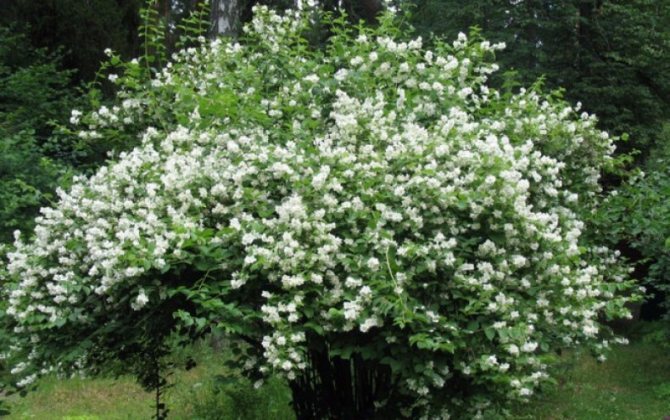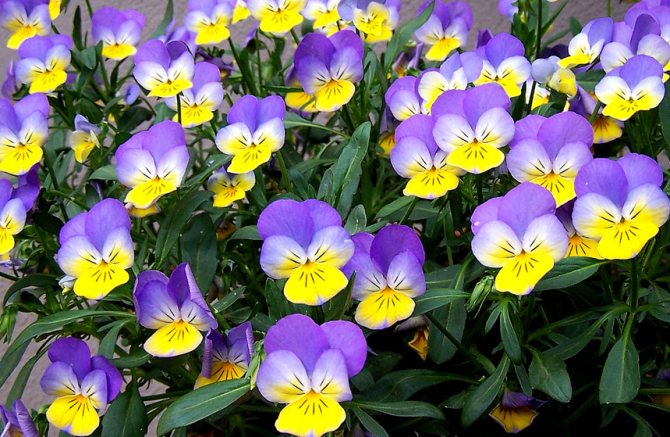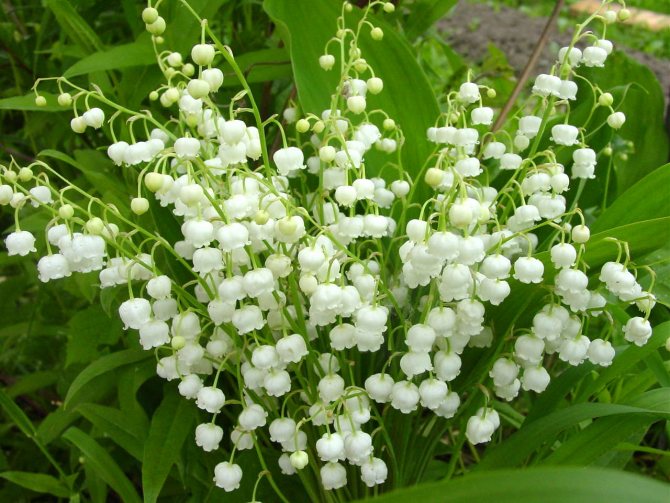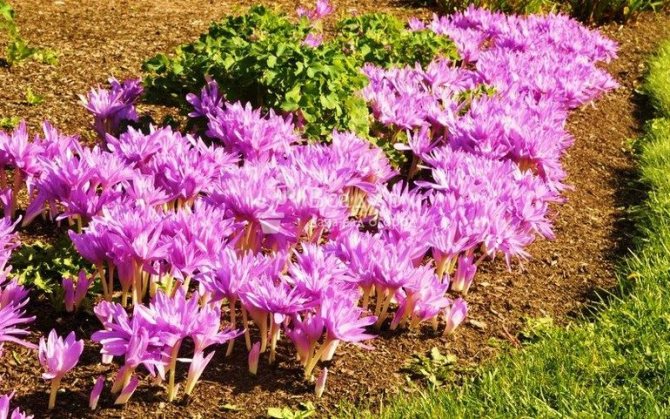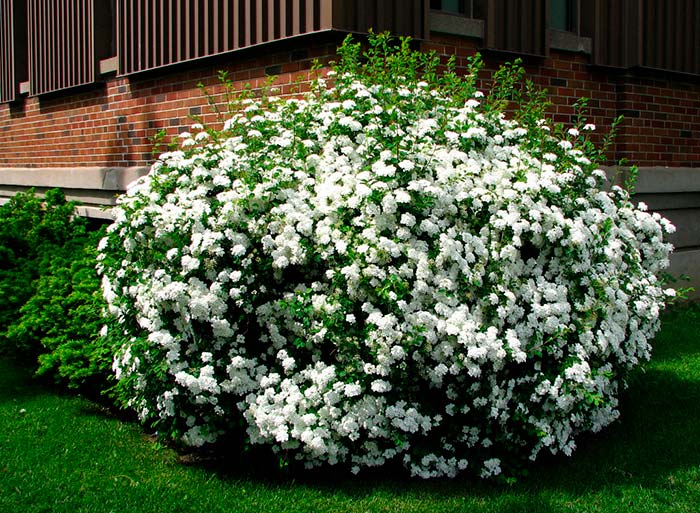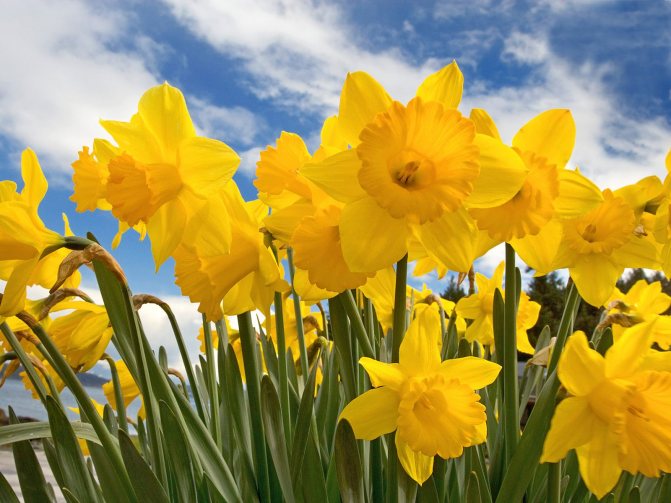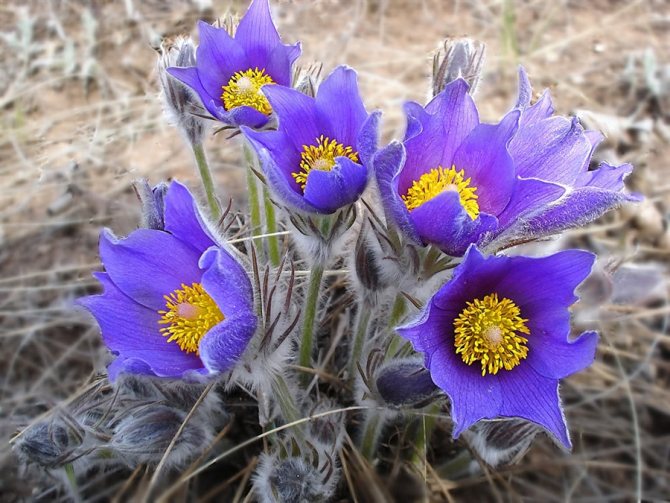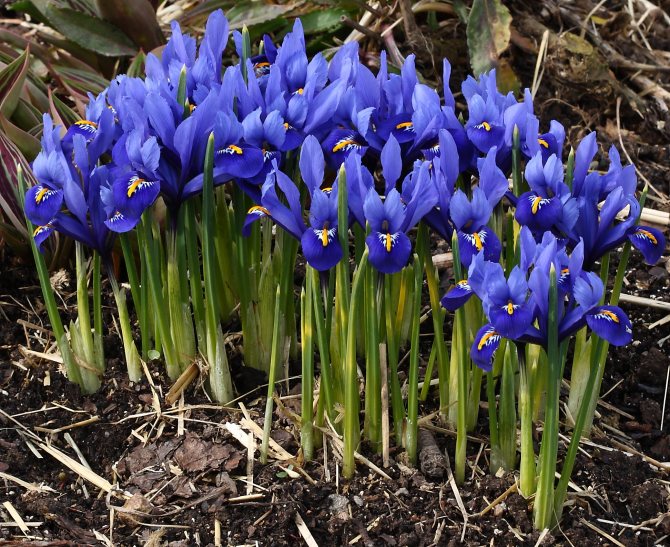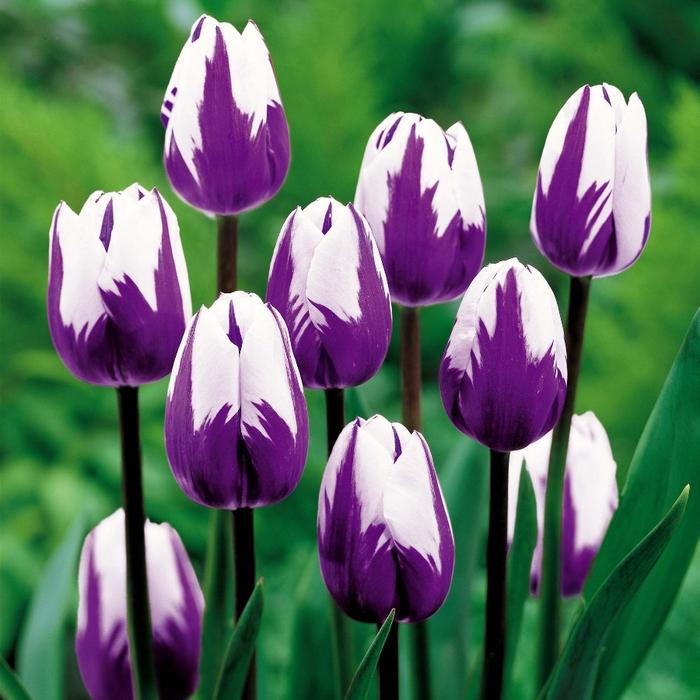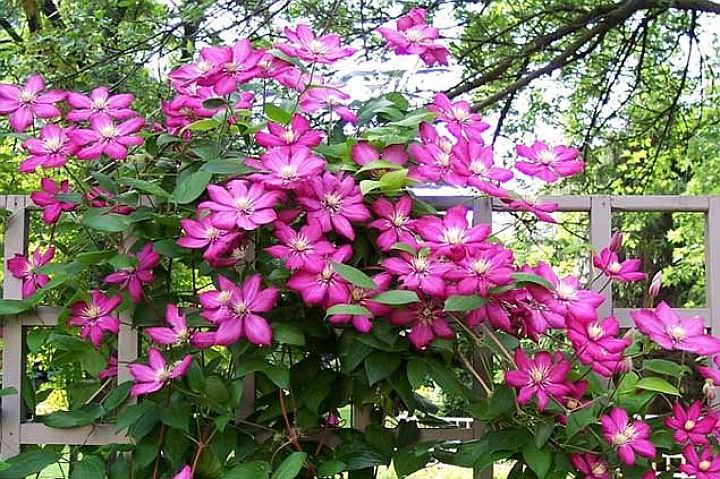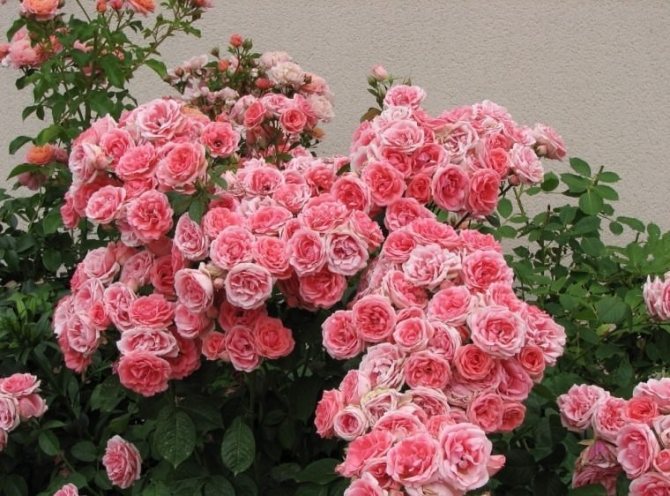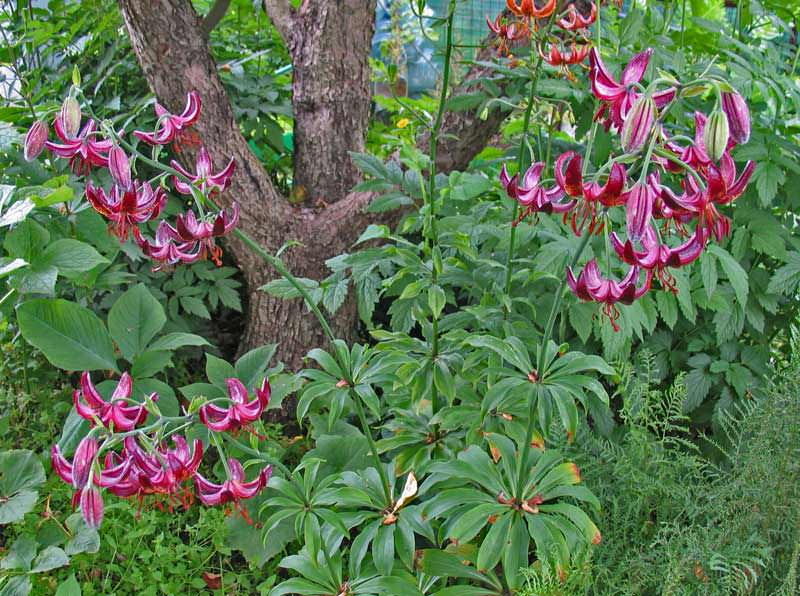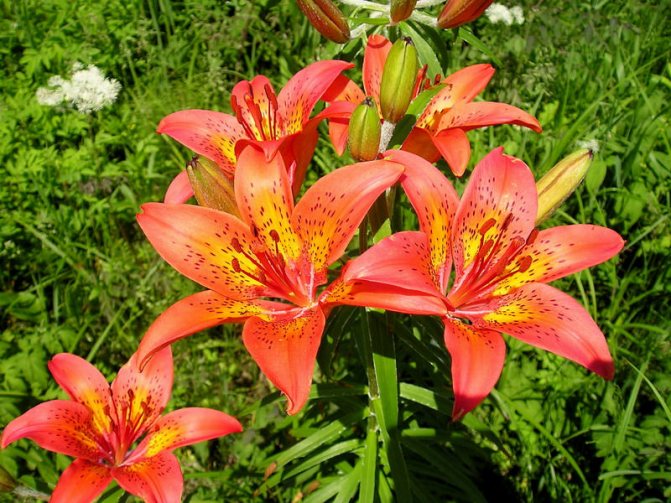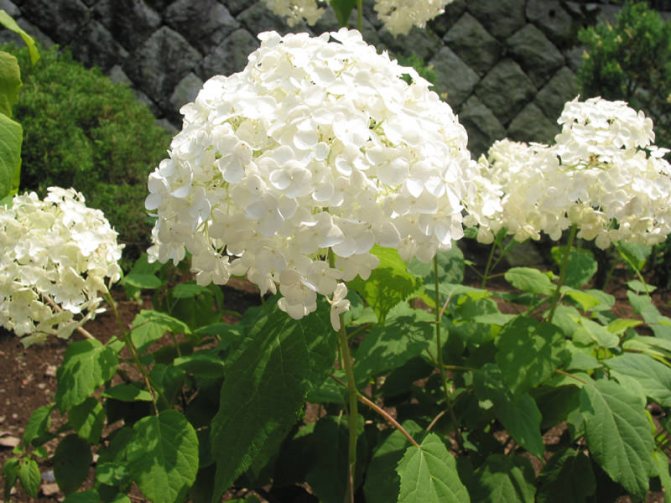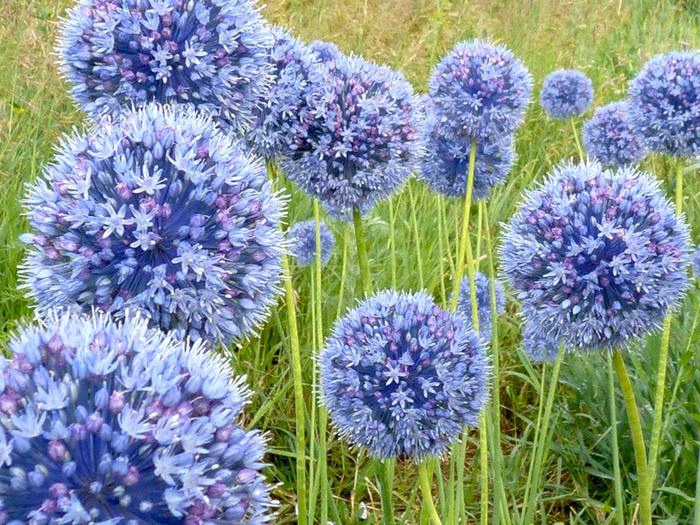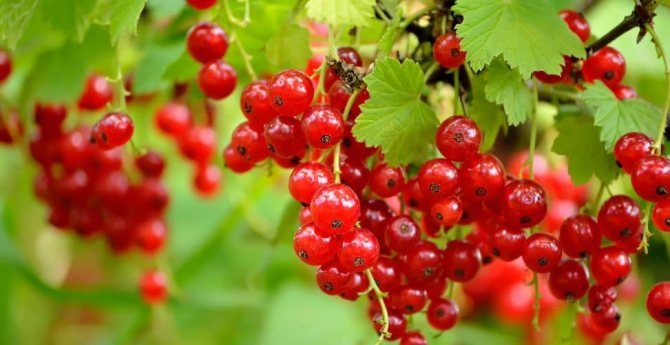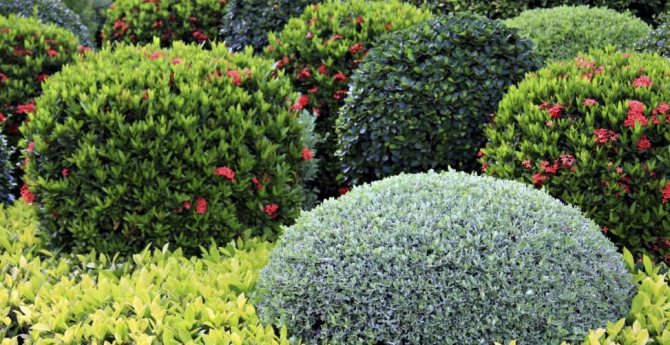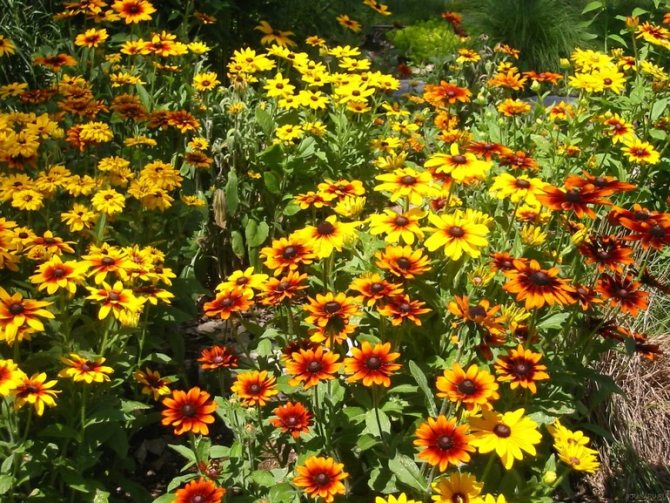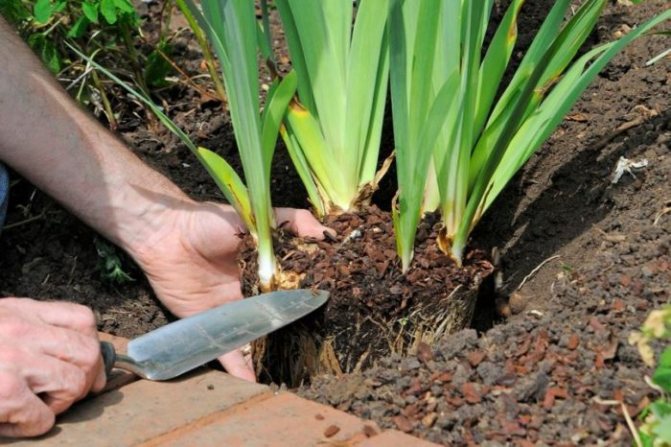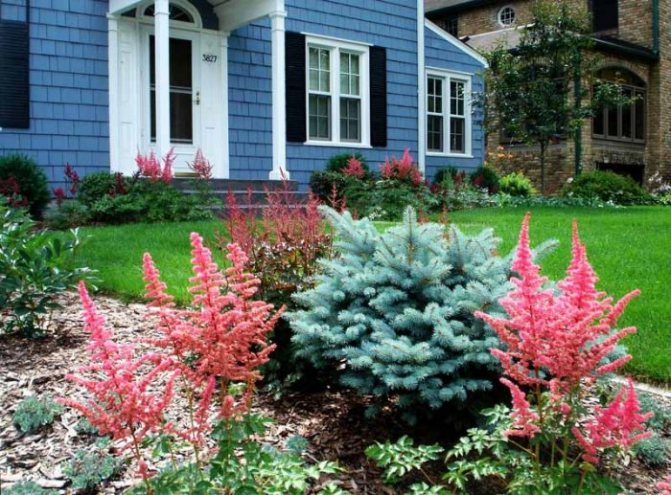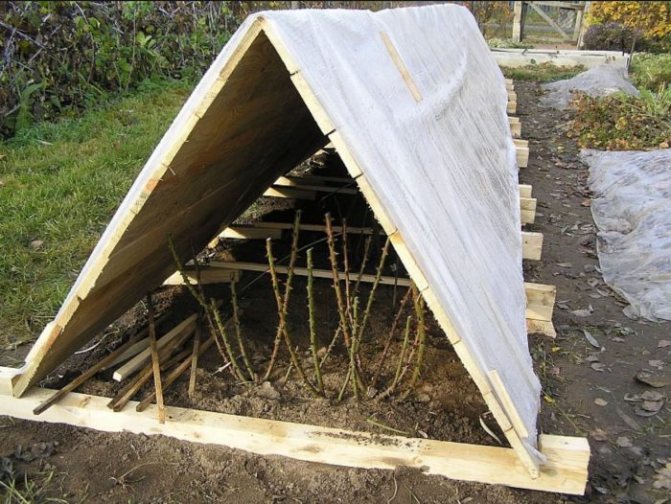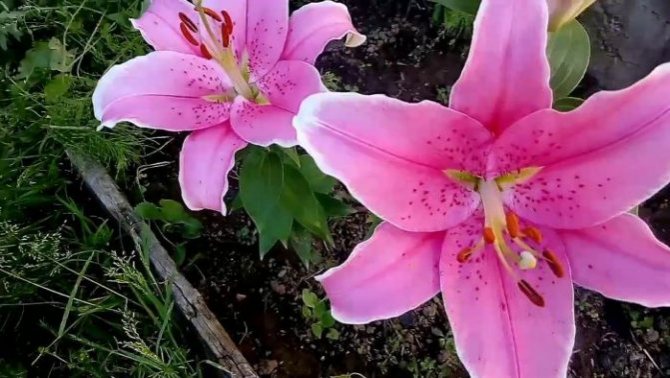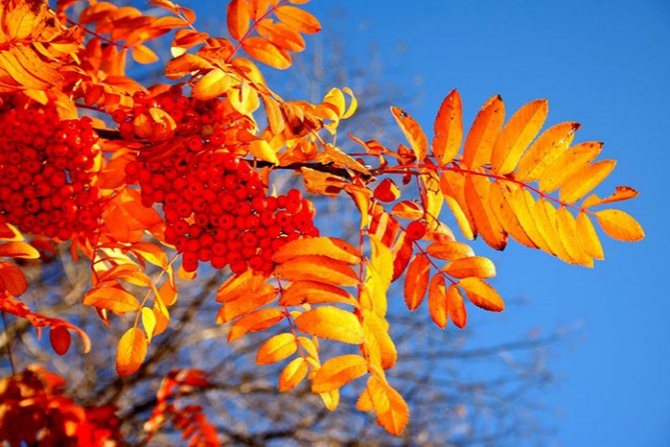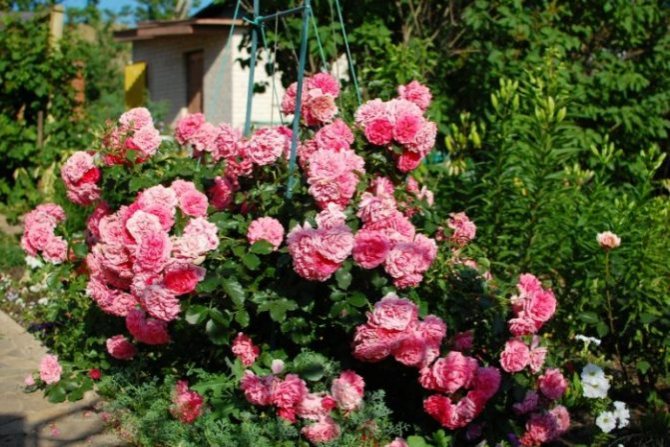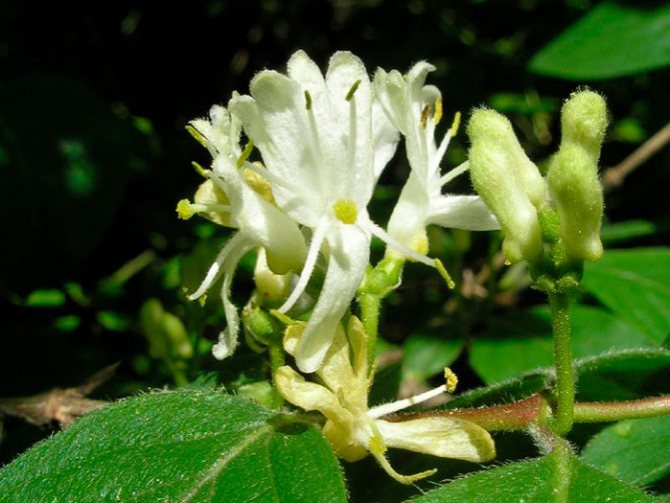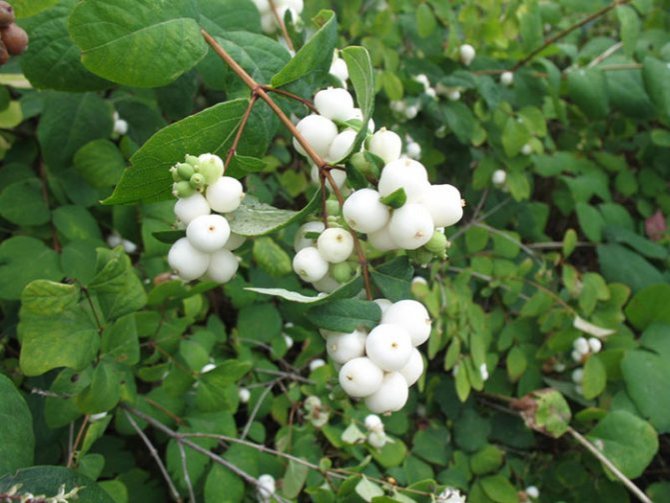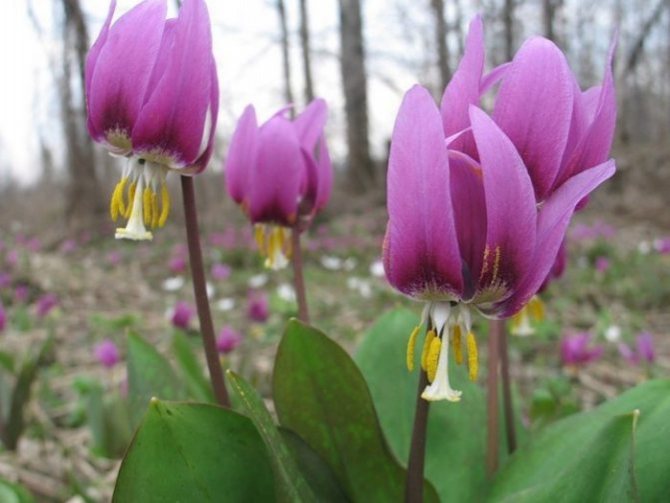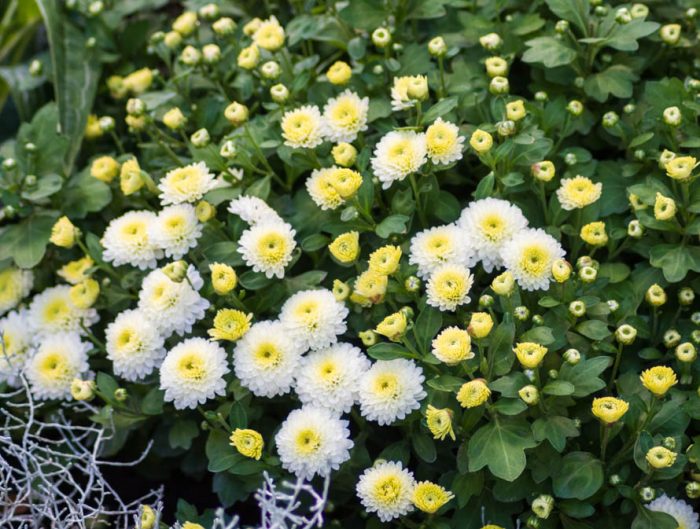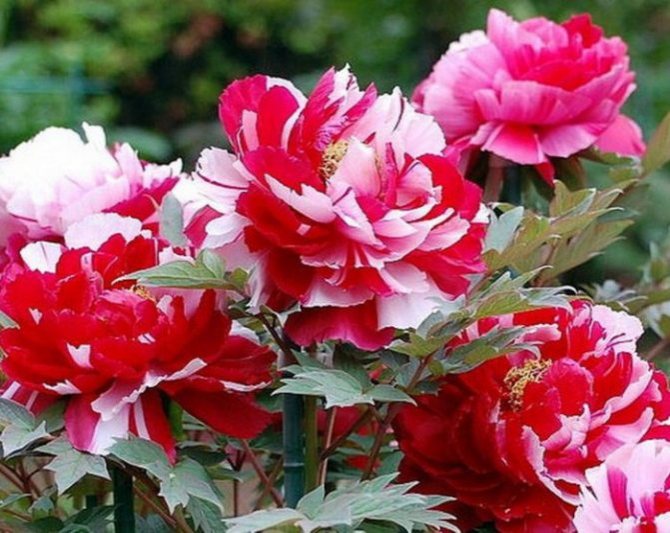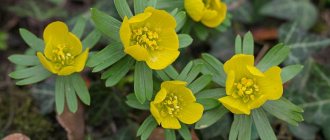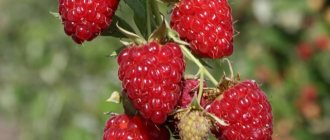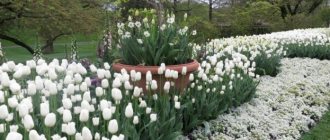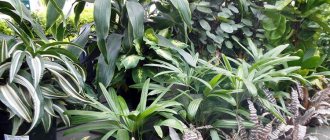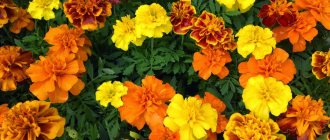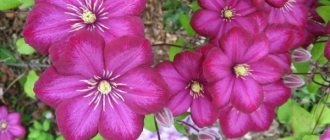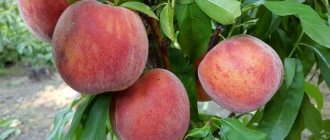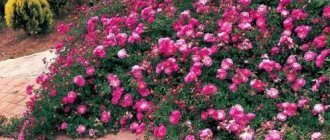Since the choice of vegetation for decorating a garden directly depends on climatic conditions, residents of the Urals and Siberia often face the problem of choosing flowers that could bloom with bright colors throughout the summer season.
This is due to the fact that most plants are very demanding on temperatures, and perennials hardly survive harsh winters.
The harsh climate of some localities dictates the conditions for choosing plants for decorating the garden. But there are a number of plants that will not only firmly withstand temperature changes, but will also be able to bloom in a year no less brightly. Of course, they will also require some care, so it is better to start planning such a garden with the preparation and study of the features of suitable vegetation.
We have prepared for you photos and names of perennial flowers for the Urals and Siberia, blooming all summer, with a description of their characteristics.
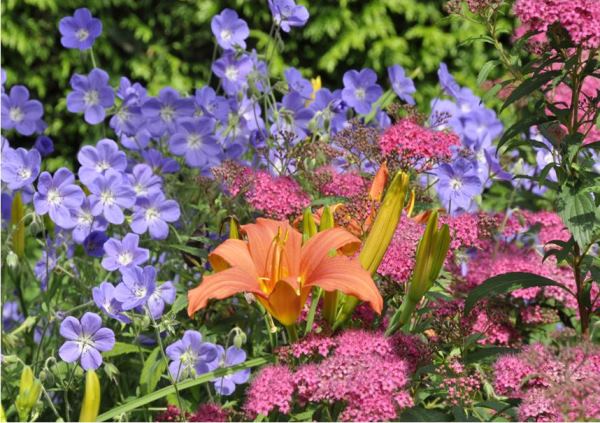
Features of growing perennial plants and flowers in Siberia in the Urals
If in winter snow drops enough lot and everywhere there are large snowdrifts, then most viable perennials will winter well, lying in the snow. It's another matter if little snow, and the frosts are strong, then this is very bad for wintering perennial plants, in which case they are needed additionally securely coversuch as dry grass or some other covering material.
But it must be borne in mind that Siberia and the Urals are huge regions and what grows well in the south is not a fact that it will develop normally and bloom profusely in the northern regions. Therefore, you always need to take into account the peculiarities of your specific place of residence, and accordingly select by trial and error frost-resistant perennials, one way or another, creating the necessary conditions for them for a successful wintering.
Perennial features
There is an opinion that perennial crops do not bloom as brightly as annuals. In fact, you can find a lot of the most beautiful perennials that will surprise you with their beauty and unique flowering. Speaking about perennials, it is imperative to name a few more advantages:
On a note. By choosing the right perennial crops, you can create a beautiful flower bed that will delight you for several years.
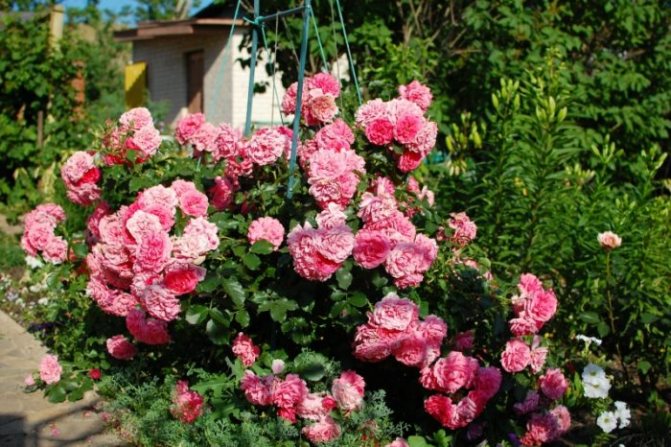

Japanese velvet
Used in ornamental gardening. This culture belongs to the genus Velvet, which is part of the Rutov family. His homeland is the Japanese island of Honshu. It grows for a very long time, the maximum height (10 m) is reached by the age of 50.
Deciduous tree with a wide openwork crown. The trunk is covered with furrowed thin but dense bark, which has a dark brown or dark brown color, and reddish-brown shoots.
Leaves are dark green, odd-pinnate, emitting a specific aroma. The foliage consists of 5-13 ovate-lanceolate truncated, pointed or cordate leaves, curved at the base. In the fall, the foliage turns yellow.
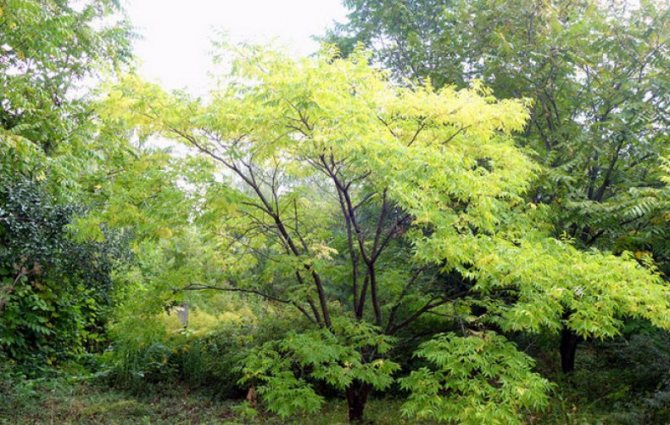

Chubushnik
It is more often found under the name "jasmine" (because of the sweet aroma of flowers), belongs to the Hortensia family and has more than 50 species. Bushes 1-4 meters high.It is considered a deciduous shrub, but some are semi-deciduous. The bark is thin, gray in color, and in some young bushes it is brownish. Wood with a wide core, hard. Leaves on short cuttings, simple, 5–7 cm long, opposite. The upper surface of the leaf is smooth, while the lower is often pubescent. The shape of the leaves is varied: wedge-shaped, rounded, elongated or oval, sometimes pointed at the end of the leaf, the edges are solid or serrated.
Inflorescences are located at the edges of young shoots and in the axils of the upper leaves. The brushes consist of 3–9 flowers. The blooms are very fragrant, but they may not be odorless. The form is often simple, and in some varieties the flowers are double or semi-double. The color of the buds is delicate: white, cream, yellowish. The calyx is glass-shaped, with 4–5 concave sepals. Corollas with 4-6 large petals of various shapes: cruciform with a wide gap between the petals, linear, petals can go behind each other and create an almost square bud.
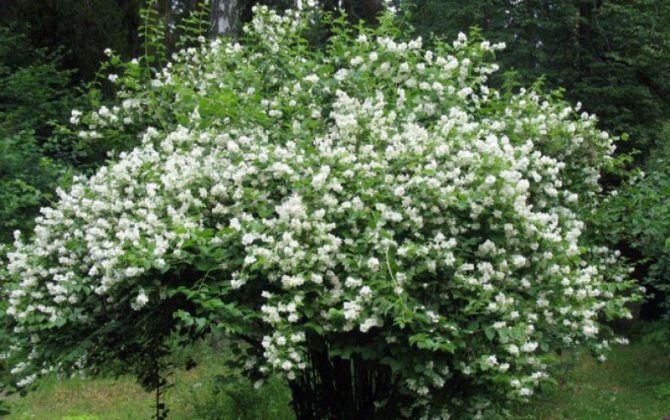

The photo shows the ‘Mont Blanc’ mock-orange, bred in France and belonging to the varieties of Victor Lemoine. One of the most winter-hardy representatives, suitable for growing in the cold territories of Russia.
Trace before planting how close the groundwater is and create good drainage. Bushes sometimes need to be thinned out, otherwise the flowering of the shrub will be scarce.
Read also: How much to cook a rabbit in the oven
Derain white
Derain white is also called svida or svidina white. It belongs to the genus Kizil, the Kizilov family, cultivated in Siberia. The shrub is very branched, its height is up to 3 m. The branches are straight, flexible and bare, have a bright red color, which becomes even richer in the spring period, curved towards old age and acquire an arched shape. Leaves are opposite, have 3-5 arcuate veins. The leaf plate is in the form of an ellipse, the edges are solid, on both sides it has an appressed, short pubescence, glaucous below, dark green above.
Flowers are collected in dense scutes. Pedicels are covered with dense gray pubescence with a reddish tint. Calyx wide-triangular with short sharp teeth. Corolla broadly with 4 white petals. Fruits are berry-shaped drupes: flattened, blue in the ripening period, and light blue when ripe. The bone is oblique, pointed at the end, elliptical in shape. Often planted in parks and gardens. Seeds are carried by birds, the plant is able to run wild.
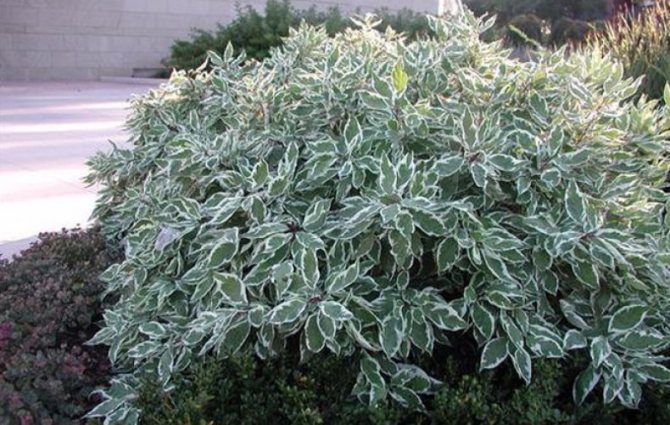

Shrub varieties adapted to the climatic conditions of the Urals and being frost-resistant have the following names:
- ‘Cream Cracker’;
- 'Sibirica variegata';
- ‘Aurea’;
- ‘Elegantissima’;
- 'Kesselringii';
- ‘Spaethii’.
These representatives are among the most popular. They do not need special care and are able to wonderfully decorate the site in the form of a hedge.
Plants of medium height
The basis of any garden corner on your site will be perennial flowers blooming all summer for the Urals and Siberia, having an average height. Their height can reach thirty centimeters. All flowers of this type can be divided into two categories: having beautiful buds and attracting attention due to their foliage.
We will talk about flowering perennials, which will allow you to diversify the color scheme of the natural landscape.
Can be grown in cold climates early varieties of tulips... For example, simple and double tulips, which can bloom in Siberia and the Urals at the end of May. But such plants need care: they should be dug up and dried every year to preserve the bulbs.
Frost-resistant and unpretentious iris varieties can even grow up to 85 centimeters. For Siberian and Ural gardens, Siberian Iris, blooming in a blue-blue palette, is suitable. Such a plant tolerates even severe frosts favorably.Also popular is the bearded Iris variety, reminiscent of tropical epiphytes. It begins to bloom in early summer.
By the way, by combining different varieties of such plants, you can achieve bright and lush flowering throughout the summer season.
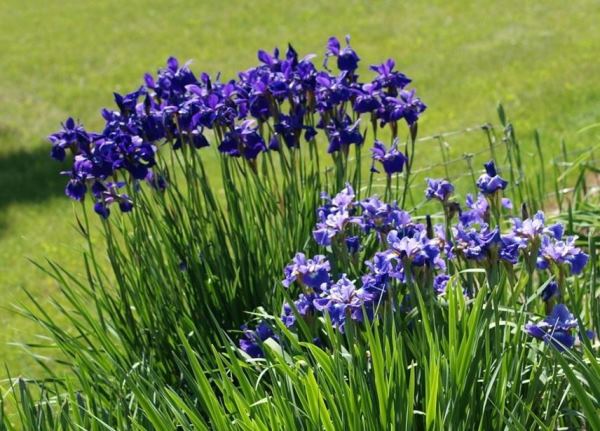

Another example of unpretentious perennial flowers for Siberia and the Urals is mountain cornflower... Throughout the summer season, flowers of a rich blue hue appear on it. Careful care for such plants is not required, as well as watering, as well as special transplants, typical for many other species. The height of the mountain cornflower can be about 0.6 meters.
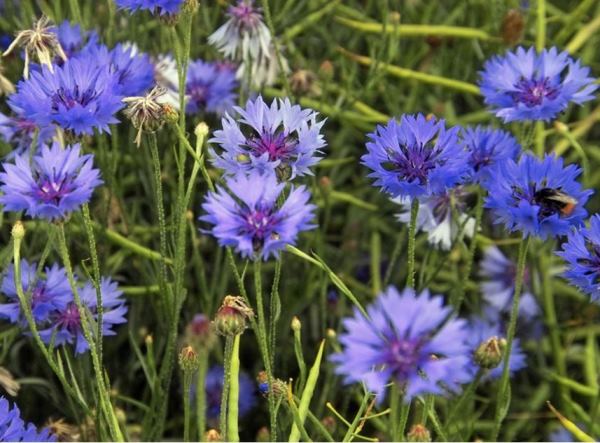

You can beautifully decorate garden plots with the help of a saranka or curly lily... The petals of these flowers look like an oriental turban. Most varieties have a pinkish tint, but there are others, for example, orange. Such plants are especially in demand among gardeners, since they do not cause any difficulties at all when planting and growing.
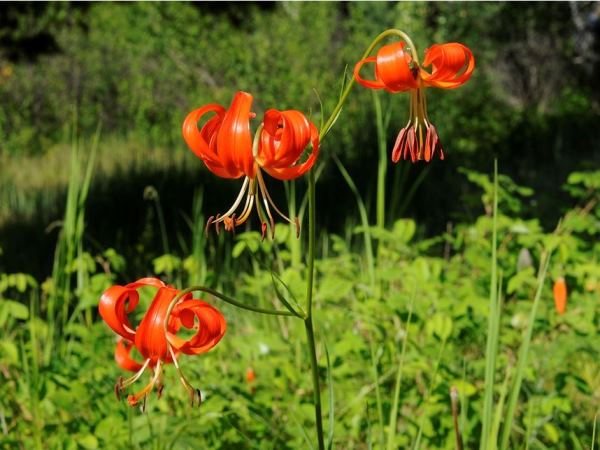

If you are looking for plants that will attract attention in the garden, take a look at lily of Pennsylvania... This plant blooms during the summer and has large red and orange buds.
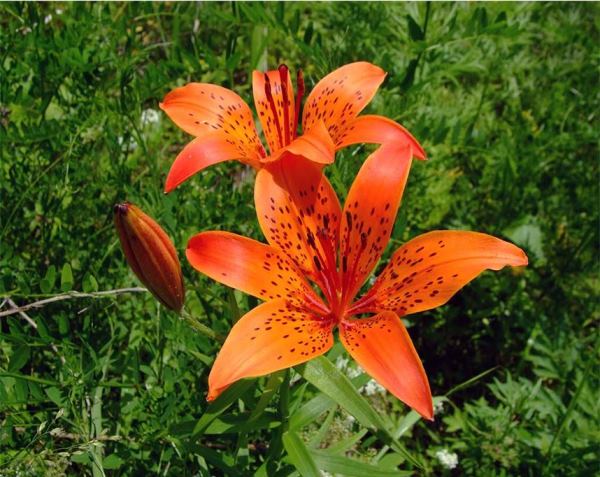

We can also offer you to decorate the site decorative bow... This perennial plant not only has a striking appearance, but is also beneficial to health. And thanks to its unpretentiousness and resistance to severe frosts, it will persist for subsequent years, so that you can enjoy the benefits of growing this variety for a long time.
During the flowering period, charming inflorescences with flowers of a lilac, lilac, snow-white, purple palette appear on the decorative onion.
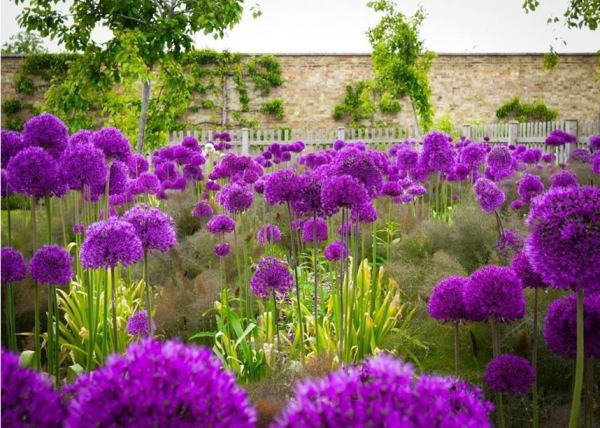

Popular in gardens created in the Urals and Siberia, and yarrow... To date, experts have developed many decorative varieties of this plant, which differ in appearance and flowering period.
To maintain the beauty of the yarrow, you do not have to constantly water or transplant the plant. But your garden will be decorated with lush inflorescences of various shades, from white to bright red.
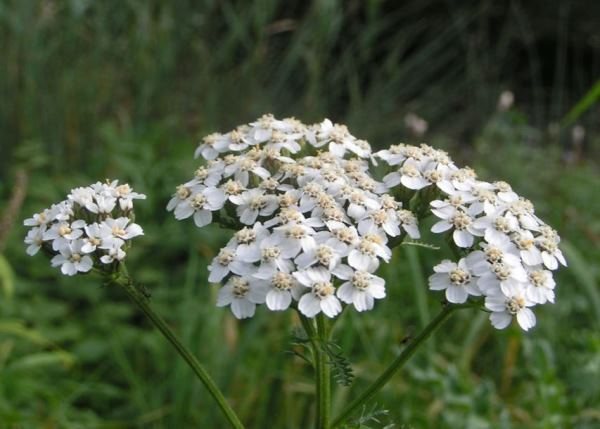

Perennial flowers for the Urals blooming all summer: photos and names
And the next plant will not only be a worthy decor for your garden, but will also decorate unsightly areas. This is about climbing rose: This perennial plant begins to bloom in early summer. Red, pink and white buds will look great on any homemade hedge.
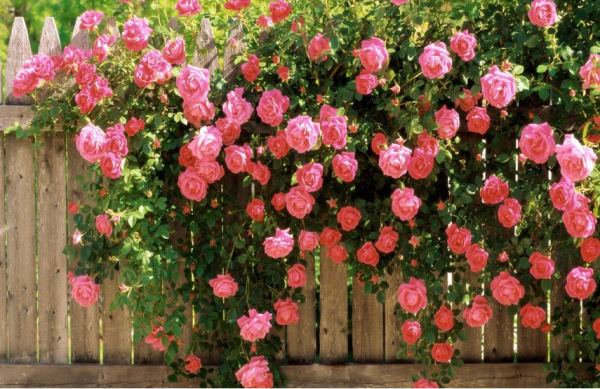

As for perennial plants with decorative leaves, they are most often used as a backdrop in garden plots. When the flowering season of most plants is over, these varieties will continue to attract attention with their greenery.
For example, you can plant in the garden hosts with large lush leaves, badanhaving round, oblong foliage and pink inflorescences, and lyatrice, which is characterized by thin lush leaves of great height and inflorescences tending upward of delicate shades. They will also look charming chrysanthemums, which bloom in lush buds during the flowering period, rudbeckiaresembling yellow daisies with a dark center, and doronicums, which are small lush bushes of small yellow flowers.
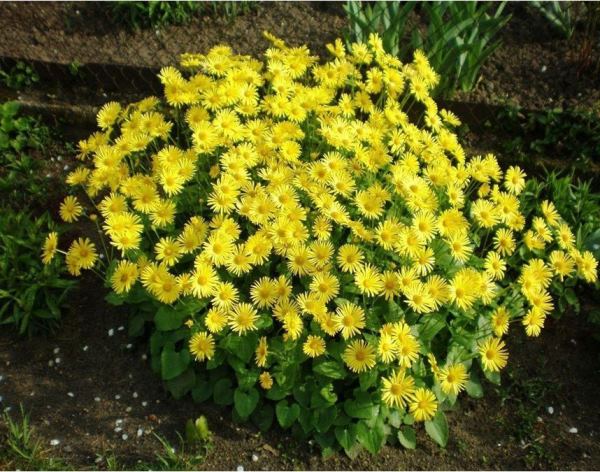

Perennial flowers for Siberia: photos and names
Maiden grapes
The maiden grape belongs to the Grape family. It is called so because of the formation of berries, which occurs without pollination. For cultivation in the Urals, a five-leafed type of maiden grape is often used. This ornamental plant is fast-growing; in nature it grows up to 30 meters. Climbs over smooth surfaces thanks to antennae that have sticky pads.Finger-shaped leaves are petiolate-ovate attached to one petiole. The top of the leaf is pointed, the edge is serrate, the top is green, and the back side is blue-green, in autumn it changes color to bright red.
Small green buds are collected in 3-5-flowered inflorescences, bloom in the second half of spring. And the fruits themselves ripen at the end of summer or in the first month of autumn, have a pronounced dark red color. Maiden grapes contain oxalic acid. The fruit is edible for birds, but not for humans.
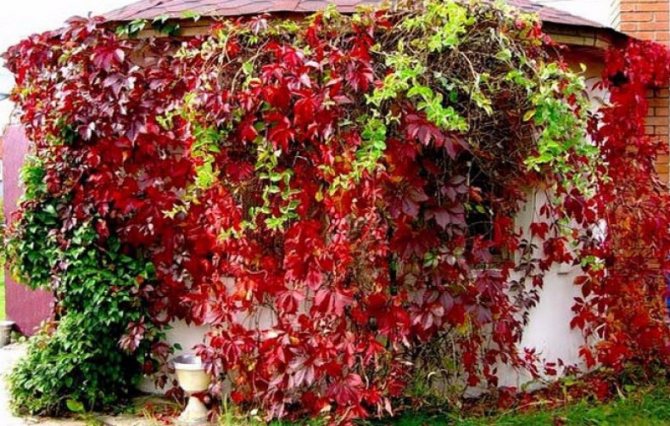

It performs well the role of a screen and a canopy on the site.
Forsythia
A genus of shrubs and small trees of the Olive family. Height from 1 to 6 meters. The bark is rough, gray-brown in color. The leaves are serrated, simple, oval, without stipules. The leaves are located opposite.
Bright yellow flowers look like bells, four-lobed calyx, corolla with fused petals. The fruit is in the form of a capsule, opened in nests, has several winged seeds.
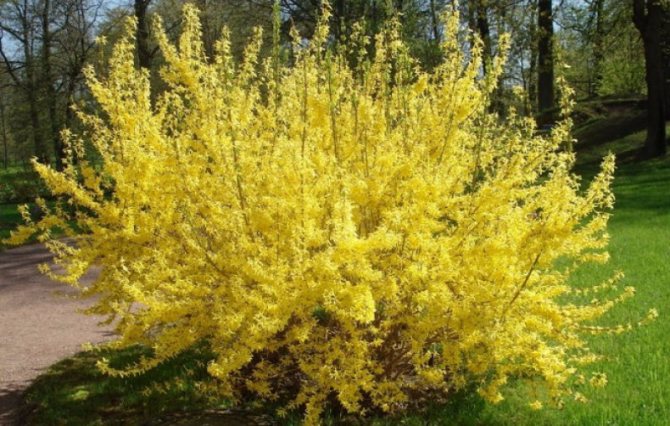

In the Urals, oval, intermediate and drooping forsythia are grown. It is adapted to frost and drought, reproduction occurs by layering or divisions of the bushes. They practically do not grow from seeds, since they have a low germination capacity. Flowering begins in the third year after planting (within a month). After that, bright foliage appears, remaining until deep frosts.
Beautiful ornamental forsythia shrubs for the garden:
- ‘Variegata’;
- ‘Parkdekor’;
- low grade 'Tetragold';
- ‘Spring Glory’;
- 'Dresden Vorfruehling';
- ‘Fiesta’;
- ‘Lynwood’;
- ‘Beatrix Farrand’;
- wonderful forsythia (spectabilis);
- dense forsythia (densiflora);
- forsythia primrose (primulina).
Kalina Buldenezh
Ornamental shrub Viburnum vulgaris, or roseum ("buldenezh" in French means "snow globe"). The height of the bush is up to 3 meters, with a wide-spreading crown.
The inflorescences are spherical, the flowers are sterile, at first greenish, later white, and when they fade, they become pink. Viburnum blooms for 25-30 days. Loves landing by the reservoir. Beautiful in both single and group landing. In winter, it is partially cut off, and propagation is carried out by cuttings. A high percentage of summer and spring cuttings are taking root. Buldenezh loves leaf beetles and aphids, which will have to be dealt with from time to time. The most effective control method is chemical treatment.
Landscape use
Various perennial and annual border plants with white flowers are very well combined with conifers. Very beautiful and unusually attractive compositions can be created by alternating plants with yellow or red leaves in group plantings. Flower gardens with rose bushes can be combined with perennials against the background of conifers and undersized deciduous shrubs.
Specialists in the field of landscape and garden decor draw the attention of gardeners to the following recommendations:
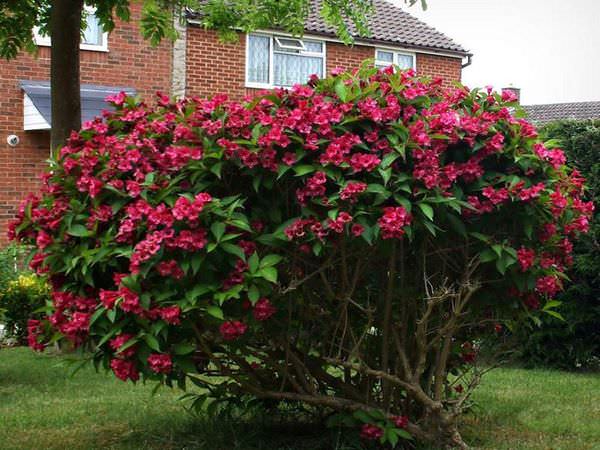

- weigela (Weigela) of low-growing varieties and species should preferably be placed in rock gardens or small groups under garden trees, and tall forms can be used in hedges;
- highly decorative liana or climbing shrub (Ampelopsis) is most often used to decorate gazebos, pergolas, trellis structures, fences or walls;
- creeping and creeping evergreen low shrub Gaultheria is perfect for container compositions, as well as for decorating rock gardens and creating ground cover plantings;
- modern and very attractive pergola, wall or hedge décor can be created with Wisteria;
- hydrangeas (Hydrangea) are widely used when creating low-growing group plantings, for decorating borders and decorating fences;
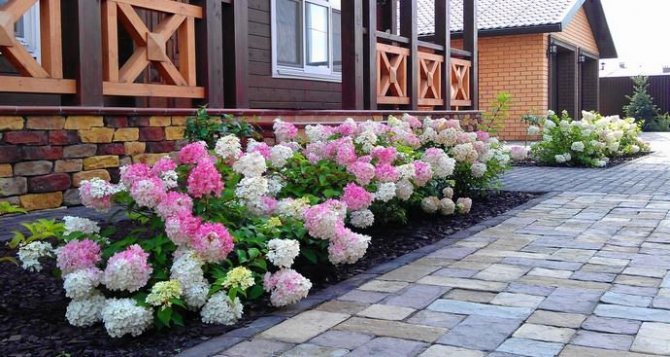

- action (Deutzia) "knocked out" various tree groups, as well as framed border plantings;
- both in single and in group plantings, as well as, if necessary, to create a hedge, the popular in our country viburnum (Viburnum) is often used;
- for the purpose of green design of rocky areas, as well as, if necessary, planting in shady places near water bodies, it is advisable to give preference to buckthorn (Frangula) and leucothoe (Leucothoe);
- for group plantings, you can use kalmia (Kalmia), dogwood (Cornus), hazel (Corylus) and snowberry (Symphoricarpos);
- lilacs (Syringa), stewartia (Stewartia), enkianthus (Enkianthus), and mock-orange (Philadelphus) feel best in single plantings.
Shrub cinquefoil
Cinquefoil shrub, or Kuril tea, is the largest genus of shrubs from the Rose family in terms of the number of species.
They are varied in color: white, pink, yellow with different shades. Stamens are often 20, filiform and subulate. The pistils are small, often located at the apex and attached to the receptacle. There are many fruits, they consist of 10-80 hemicarps and fall off one by one. The shrub is not only incredibly beautiful during flowering, but also very useful.
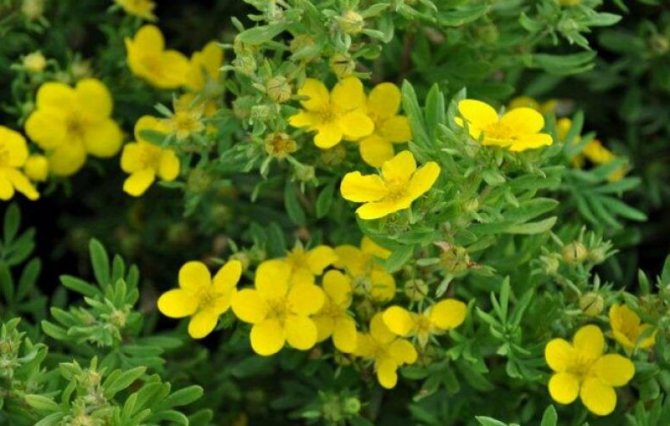

Scientists have found that Kuril tea has antimicrobial activity aimed at fighting intestinal infection and even cholera vibrios. Diluted by cuttings or dividing the bushes.
Bubble
The gallbladder is a genus of deciduous shrubs of the Rose family. An ornamental shrub suitable for single and group plantings. Stagnation and excess moisture does not tolerate.
The crown is dense, the brown-gray bark is exfoliated by plates. The foliage is toothed, 3-5 finger-shaped, petiolar, the stipules fall off. Leaves turn red in autumn, later turn yellow and turn brown. The flowers are in corymbose inflorescences, located at the ends of short twigs on the sides, white or pink. There are five sepals and petals, many stamens (up to 40), pistils from 1 to 5, fused at the base and containing 1-5 seeds. Hypanthium is campanulate.
The fruit consists of leaflets, turns red when ripe and bursts at the top. For ornamental cultivation, several varieties of the viburnum vesicle are used, which are combined into 2 groups of varieties: yellow-leaved and red-leaved. In the photo - a cultivar of viburnum bladder.
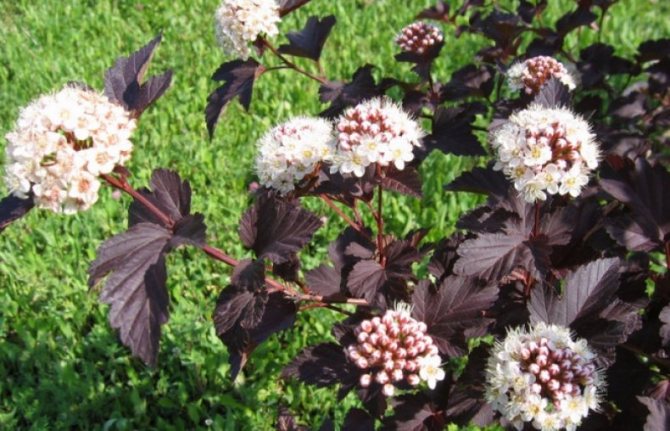

Red-leaved varieties:
- ‘Diablo’ - up to 3 m high, purple-red glossy leaves, when planted in a shaded area, turn green.
- 'Summer Wine' - up to 2 m high, wine-red leaves in spring, green in summer.
- ‘Red Baron’ - stands out with pinkish flowers, red berries. Height up to 2 m.
- 'Luteus' - height up to 3 m, yellow leaves.
- ‘Dart’s Gold’ - reaches a height of up to 1.5 meters, foliage is yellow-orange, green in summer, bronze-yellow in autumn.
When planting a hedge, an original, diverse wall of shrubs is obtained from different varieties of bubblegum. Even when the bush is not blooming, it still attracts attention with its unusual color of the leaves.
Oregano
Perennial herb from the family Labiatae, with a branched creeping rhizome, very fragrant. Stems are straight, branched, tetrahedral, mykopushennye. The oblong-ovate pointed leaves are opposite. Small purple-pink two-lipped flowers are collected in a corymbose inflorescence. The fruit consists of four rounded ovate nuts enclosed in a cup. The plant has a spicy bitter taste. Blooms in July-August. Grows in shrubs, forests, steppe meadows in the forest and forest-steppe zones of the Urals.
Oregano is used for intestinal atony, to improve appetite and digestion. The infusion is taken for colds, sore throat, cough, suffocation, pulmonary tuberculosis.
Oleg Prikhodko
Since the choice of vegetation for decorating a garden directly depends on climatic conditions, residents of the Urals and Siberia often face the problem of choosing flowers that could bloom with bright colors throughout the summer season.
This is due to the fact that most plants are very demanding on temperatures, and perennials hardly survive harsh winters.
The harsh climate of some localities dictates the conditions for choosing plants for decorating the garden. But there are a number of plants that will not only firmly withstand temperature changes, but will also be able to bloom in a year no less brightly. Of course, they will also require some care, so it is better to start planning such a garden with the preparation and study of the features of suitable vegetation.
We have prepared for you photos and names of perennial flowers for the Urals and Siberia, blooming all summer, with a description of their characteristics.
Spirea
Spirea is a genus of deciduous shrubs of the Rose family. Height from 15 cm to 2 m. The root system is poorly developed, superficial. Branches are outstretched, erect, rising or spreading, light or dark brown, the bark exfoliates longitudinally. Young shoots of different colors: from green to brown. Buds are small, from ovate to pointed. The leaves are petiolate, alternate, narrow-lanceolate and round, simple and serrated.
Shield-shaped racemes (at the base with a rosette of leaves), sessile or almost sessile umbrellas. Summer flowering has simple or complex shields, late blooming - pyramidal, cylindrical or elliptical shields. The flowers are bisexual, sometimes dioecious, the color depends on the type of plant: white, pink, red, purple. Hypanthium is bell-shaped or cupped. The leaves are oblong or rounded.
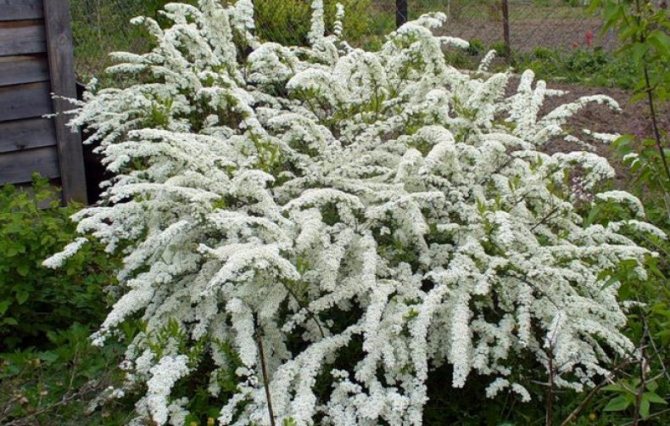

Spirea grows in any climatic conditions, unpretentious.
1.Spring :)
- Spiraea oak-leaved (Spiraea chamaedryfolia);
- Spiraea nippon (Spiraea nipponica) - can freeze slightly, but can be quickly restored;
- Spirea sharp-toothed or arguta (Spiraea arguta) - quickly recovers after severe frosts;
- Spiraea gray or ashy (Spiraea cinerea) - similar to agrute, but more frost-resistant;
- Three-bladed spirea (Spiraea trilobata).
Read also: Ultrasonic bug and cockroach repeller
2.) Summer:
- Spirea Billard (Spiraea billardii);
- Spirea willow (Spiraea salicifolia);
- Lilac spirea (Spiraea syringaeflora) - sometimes freezes, but this does not harm flowering;
- Japanese spirea (Spiraea japonica);
- Spirea Bumalda (Spiraea bumalda).
Agrotechnical cultivation
Planting perennials
When planting perennials, it should be borne in mind that they grow over time. Therefore, they are located at a distance from each other. In the first years, this distance can be filled with annual plants.
In total, there are three options for planting perennial plants:
Each of them has its own characteristics. Planting dates depend on the type of plant and the characteristics of growing in a particular case.
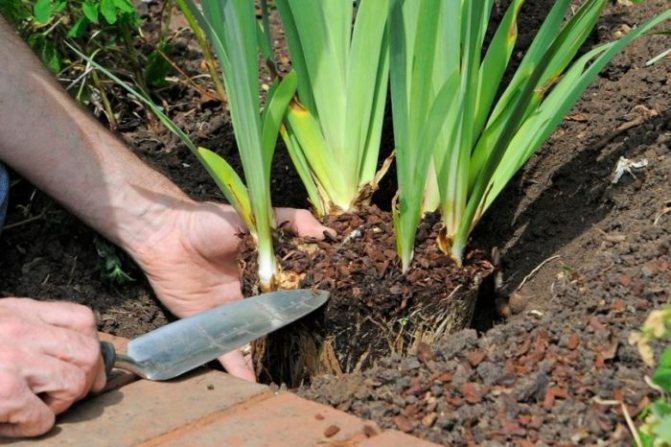

Over the years of growing perennial plants, certain rules and recommendations have developed. First of all, you need to observe all the features of planting and growing a particular crop. There are several nuances that need to be considered when creating decorative flower beds from perennials:
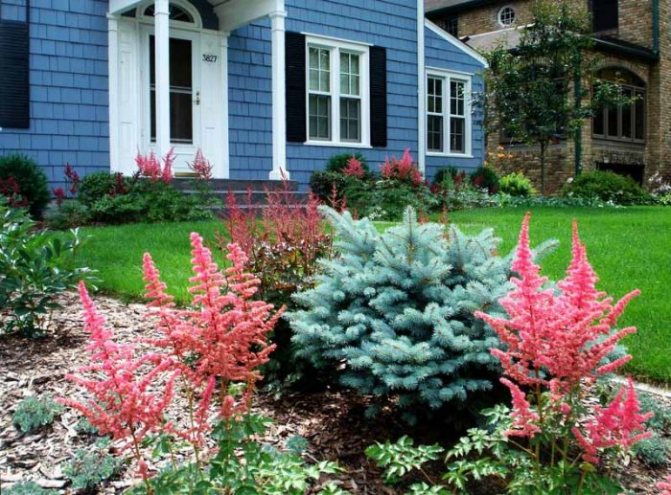

Perennial care in the Urals
Caring for perennials in the Urals does not have a fundamental difference with other regions. To obtain a beautiful flowering, you will need to carry out the entire complex of actions, in accordance with the agricultural technology of the selected perennial crop, there are still some nuances.
Watering is carried out in moderate amounts, as the soil dries out. If the summer is dry, then the volume of water increases. After each watering, loosening and weeding are carried out. Cleaning the root system of weeds is mandatory, as they are not afraid of winter and in spring they will gain strength faster than flowers.
Another important point is mulching. Straw, peat, bark are used as material for mulch, but inorganic substances, for example, polyethylene film, are the best option. It will also help preserve perennial flowers for the Urals in winter. It will not be superfluous to introduce complex mineral fertilizers before winter.
All other agricultural activities are carried out in accordance with the requirements of the plant itself. Some need to be pruned in the spring and fall, while others grow well without being clipped.
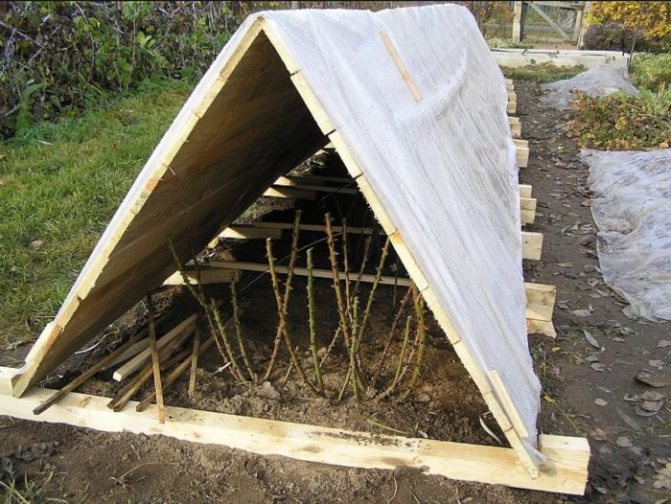

Shelter roses for the winter
Preparing for winter
Some plant varieties are not able to endure the harsh winter of the Urals on their own. To prepare perennials, two stages of work are performed:
As you can see, beautiful perennials can be grown in the harsh conditions of the Ural climate. With the right approach to creating flower beds, there will be no big difficulties. It is important to choose the right varieties of garden flowers for the Urals and provide them with acceptable growing conditions.
Honeysuckle
A genus of upright, creeping or climbing shrubs, a type genus of the Honeysuckle family.
Early ripening varieties:
- "Amazon";
- "Maria".
Medium ripening varieties:
- "Elizabeth";
- Gorlinka;
- Uralskaya.
For garden plots, it is recommended to grow varieties: "Lazurit", "Bazhovskaya", "Fianit", "Chernichka", "Sineglazka", "Steadfast", "Magician". With the presence of representatives of these varieties, you will not be left without a crop. Choosing the type and variety of shrubs for your site, you can not only transform the territory, but also benefit yourself and your loved ones in the form of a useful harvest. Whatever shrub you choose, always remember that for each certain planting rules and care features must be observed. Even an unpretentious plant sometimes needs attention.
In the Urals, gardeners have to seriously think about perennial flowers that can survive harsh winters. Delicate plants in this case are not suitable - not all of them will withstand frost. In the article, we will give a detailed overview of the most persistent, beautiful and unpretentious perennials that can grow in the harsh conditions of the Ural climate.


Video
For perennial flowers that can be planted in mixborders in the gardens of the Urals and Siberia, see this video:
The peculiarities of the climate and soil conditions of the Urals do not at all prevent gardeners from creating unique compositions. Blooming in the plots lasts from early spring to late autumn. To create such beauty, you just need to select the appropriate varieties. It is quite possible to grow perennials in the garden of the Urals, without fear that the plants will freeze out in the cold winter.
When choosing varieties of perennials, one should take into account the following parameters - frost resistance of the roots and the ability of flower buds to survive in the cold of the Urals. If such indicators are absent, then it will be problematic to preserve the plant in the Ural conditions.
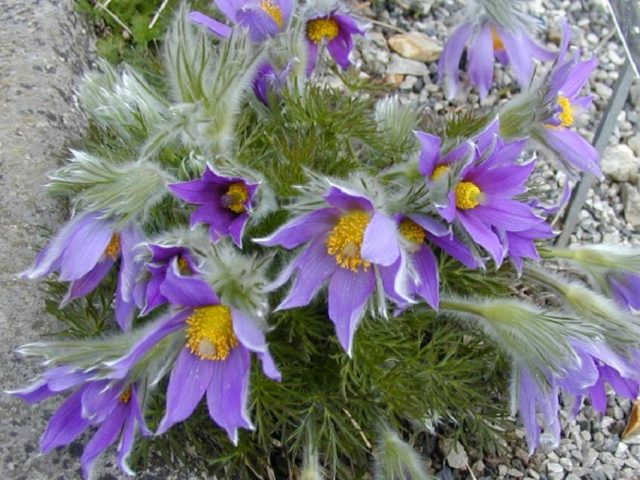

Perennials have enough advantages over annual species, which are distinguished by a richer palette of colors. The most worthy parameters of perennials for the Urals:
The types of perennials for the gardens of the Urals are divided into some parameters:
- flowering period;
- the height of an adult plant;
- the structure of the root system and foliage.
Perennial flowers are successfully grown in the Urals and in parks, and not only in garden plots. At the same time, delicate primroses are considered the most popular.
Spring flowers
The first step is to consider the plants that bloom first in the growing season.
Crocus
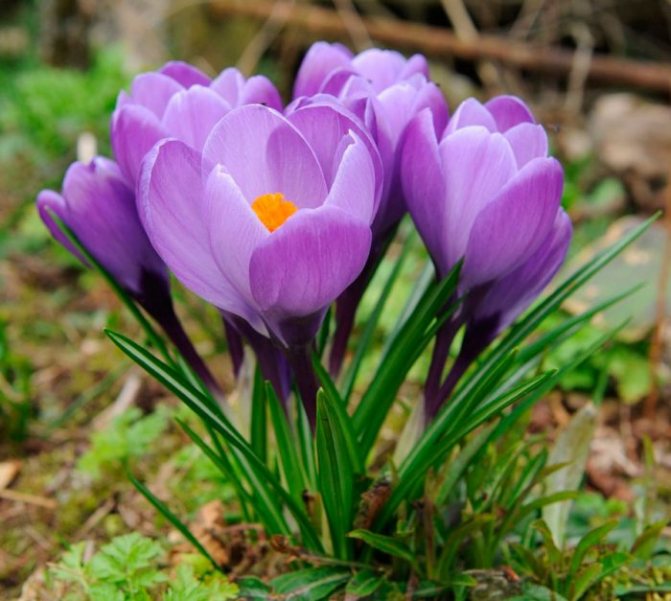

Bright flowers, which, like most other primroses, are bulbous. Crocuses are able to survive the Ural winter without shelter, which makes life much easier for gardeners. In landscape design, they can be perfectly used both for mono-planting and for compositions.
Tulip
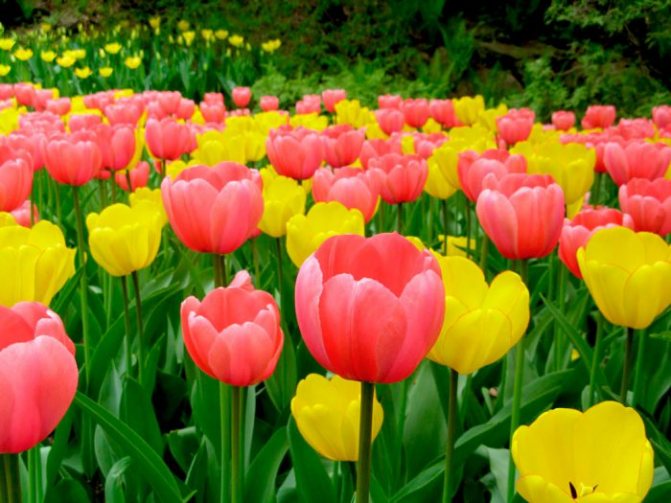

One of the most popular garden perennials. The tulip can boast of unpretentiousness and a rich range of shades (see photo). Today gardeners have the opportunity to choose tulips from a huge assortment of varieties: you can create a picturesque and bright flower bed only from these flowers.
The height of the plant can be 10-50 cm, suitable for landscaping both garden beds, and alpine slides, and other landscape elements. Bloom, depending on the variety and weather, from March to the end of May.
If you decide to plant a decorative terry variety or another popular hybrid, keep in mind that it is better to dig up the bulbs for the winter. Low-growing species tulips can also overwinter in the ground.
Narcissus
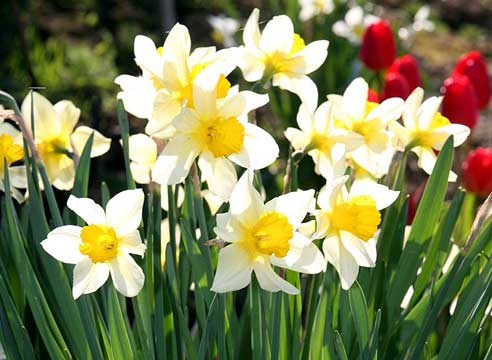

A gorgeous delicate spring flower, a favorite of gardeners. The flowering period lasts from April to May - about the same time as the tulips. Daffodils not only bloom beautifully, but also give off a delightful delicate aroma.
In height, these perennial bulbous reach 30-60 cm, can boast of both simple and double buds, long and short petals. The plant, despite its delicate beauty, is quite unpretentious, successfully coexists with other perennials, does not require transplantation.
Periwinkle
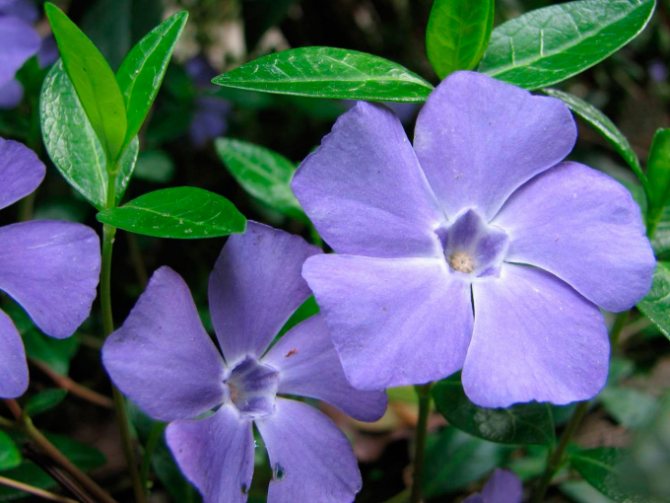

Ideal for landscaping shady areas. Often the gardener racks his brains trying to find plants that can feel good in the shade - it is periwinkle that is suitable for this purpose.
The flower is a low-growing ground cover type shrub. Flowering begins at the height of the spring season and lasts until mid-June. Thanks to the unpretentious periwinkle, you can cultivate shady areas of the garden, decorate them with glades with blue, pink and white small flowers.
Primrose
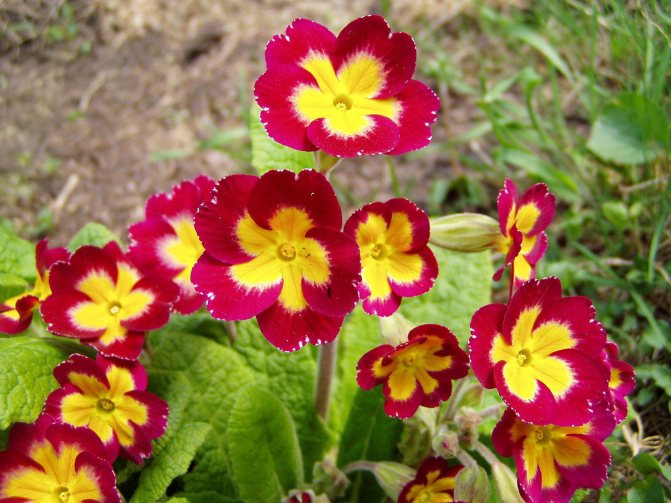

The delicate plant opens its buds when the temperature outside reaches only + 10-12 degrees. The shade of the petals can be white, yellow, less often red. The primrose is small in height - it reaches only 30 cm.
Snowdrop
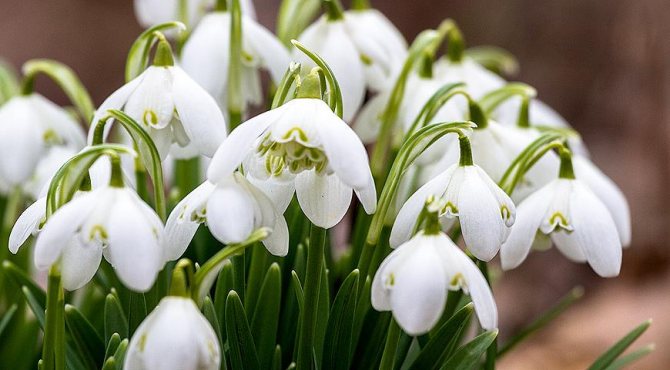

The plant, one of the first to appear in the spring garden. It has white buds with a characteristic yellow spot. This is a stunted flower, barely reaching 15-17 cm.
Kandyk
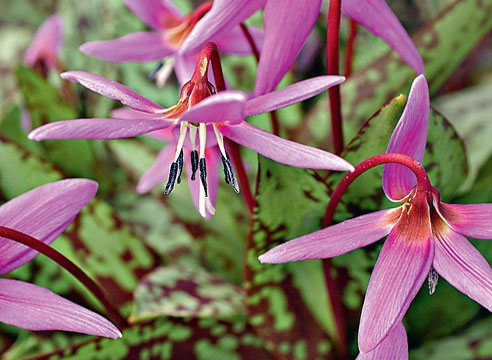

Another name is erythronium. This is a bulbous flower, reaching 35 cm in height. The buds look down, droop, have a beautiful purple-pinkish color. Flowering begins around the end of April.
Lumbago
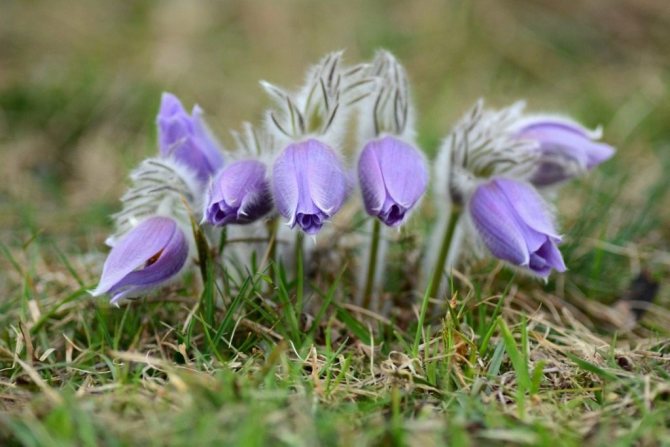

The second name is Siberian snowdrop. The color is different: the petals can be white, blue, purple, yellow and even bright blue. An extremely unpretentious plant that can thrive even in the poorest soil. Not picky about neighbors, goes well with other colors.
Alpine aster
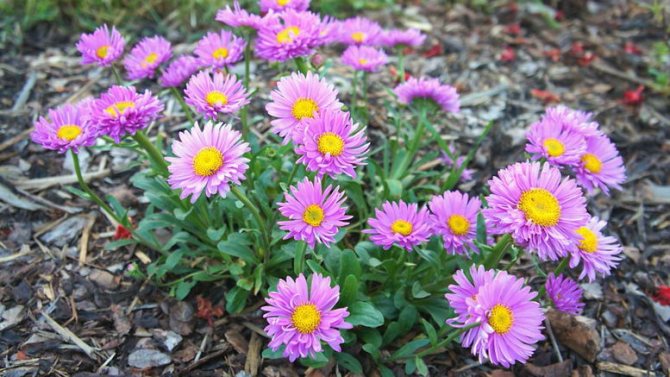

A plant that is very reminiscent of a chamomile in the shape of a bud, only with a different color of the petals. Aster is more often pink, red or purple, lilac. In width, the bush usually reaches larger parameters than in length. Blooms in late spring.
Primroses for harsh regions
The most popular and proven residents of the Ural gardens:
Backache
As soon as the snow melts, Siberian snowdrops appear on the plots. They are called lumbago or sleep-grass.
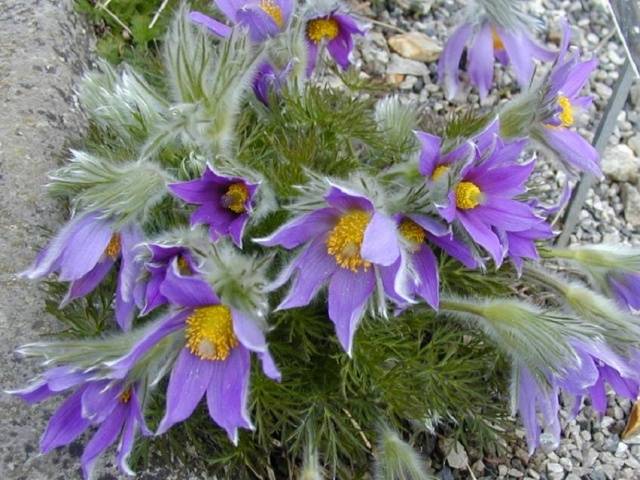

Different colors of bells give special decorative effect to flower beds and borders. They grow well on soils of different compositions, endure winter without additional shelter, get along well with other bulbs that can withstand the conditions of the Urals. Therefore, group plantings of lumbago are formed together with crocuses, primroses and kandyk.
Siberian Kandyk
A very beautiful plant.
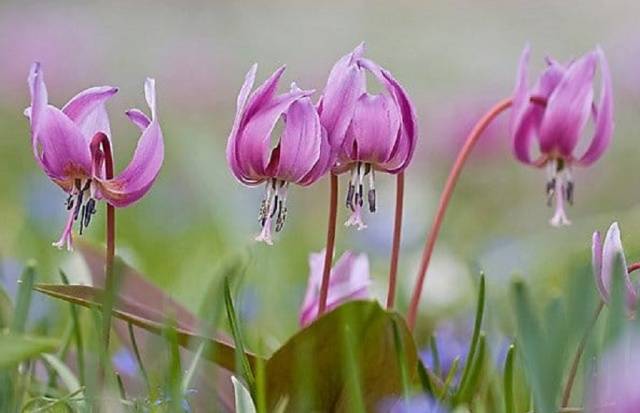

It is adored by bees and lovers of kandyk honey. And to decorate a dacha in the Urals, you can pick up varieties of perennial kandyk with different flowering periods in order to enjoy the beauty of a delicate plant for a longer time. For example, the variety "White Tsar" blooms in early April, "White Fang" - at the end of the month. The beginning of May is the time of flowering of the Olga variety. They all differ in the color of flowers and leaves, which makes it possible to diversify flower beds in the gardens and parks of the Urals. At night and in cold weather, the kandyk closes the flowers. As soon as the sun appears and the air warms up, the petals open again. In a warm spring, the flowering period is slightly reduced, in a cool spring, the kandyk blooms in the gardens of the Urals for two weeks.
The next representative of primroses, withstanding the climate characteristic of the Urals.
Muscari
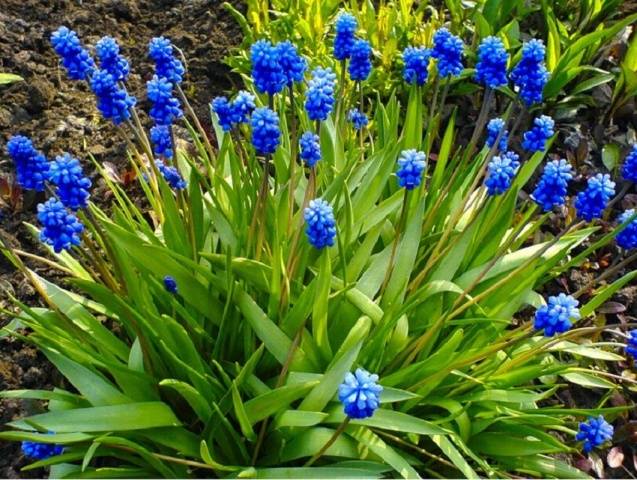

With its help, it is very good to decorate an alpine hill in the Ural park, a border or a colorful island on a summer cottage lawn. Purple, blue, white muscari inflorescences are ideally combined with other perennials of Siberia and the Urals.
Anemone
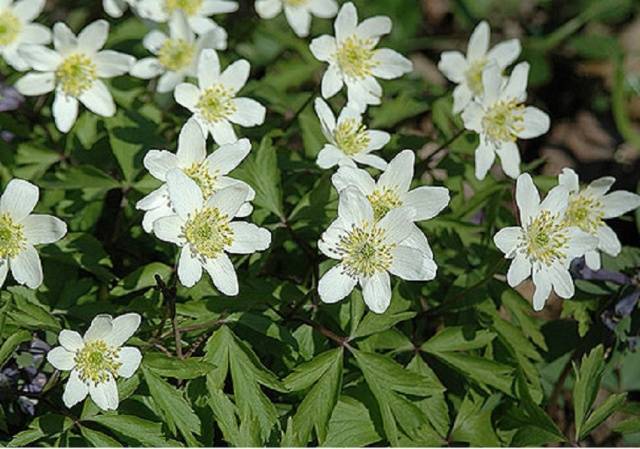

Its white flowers are familiar to all residents of the Siberian region. It does not take long to enjoy their flowering, but it is the anemone that will enrich the garden in the Urals with juicy colors to the summer variety of flowering perennials.
Summer flowers
Although the summer in the Urals is not too long, there are many plants that can bloom and please the eye even in such a cool climate. Next, we will get acquainted with the names and descriptions of these colors.
Daisies
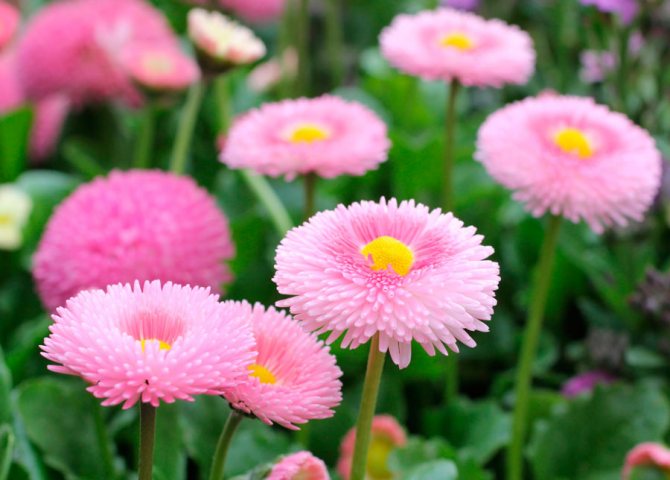

Unpretentious cute flowers, with discreet, small buds. The flowering period of daisies is long and lasts all summer.
Lily
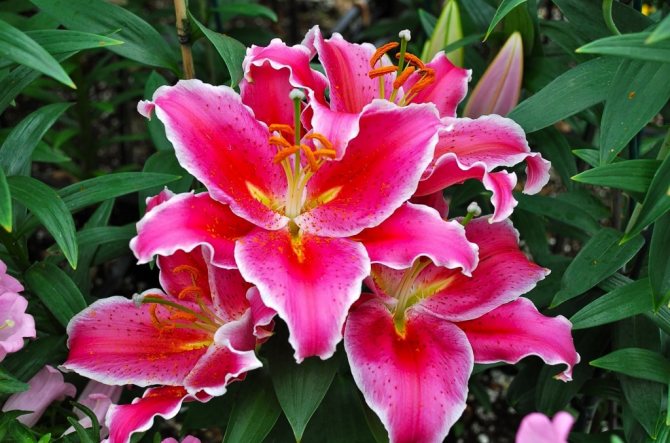

More often, two types are planted in the Urals:
Curly lily is an elegant small plant, reaching only 30 cm. The bud of its unusual original shape resembles a whimsical oriental turban. The color of the petals is delicate - white, pink.
The Pennsylvania lily is often found in our gardens. This is a well-known bright orange plant with a cup-shaped bud. It can reach a height of 1.2 meters.
Swimsuit


A plant listed in the Red Book, resembling a miniature rose. The bather loves to settle near water bodies in nature, so take care of frequent watering and irrigation of the flower bed.
The buds are more often yellow, less often orange. It begins to bloom in May, and the flowering period can last until mid-summer. Feels good in the shade.
Arabis
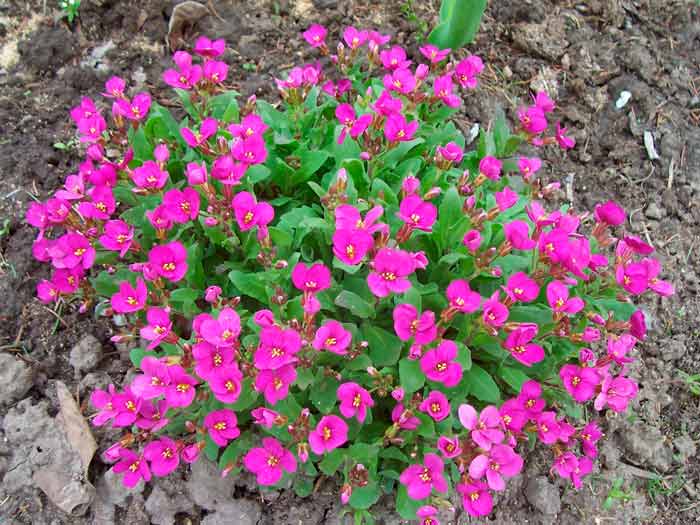

A wonderful unpretentious ground cover with stems 20-30 cm tall. After planting, it quickly grows in the territory allotted to it, forms curtains, strewn with small white and pinkish flowers.
Needs a haircut, which helps to keep decorative and neat look longer. It is better to plant it in an open area with loose soil. The culture is great for curbs, alpine slides.
Doronicum
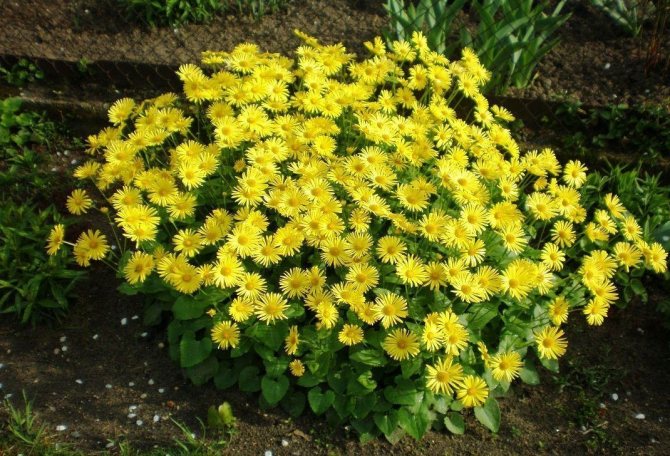

This plant blooms in late spring, but the main stage occurs in summer, sometimes even part of autumn is captured. Doronicum buds are yellow, large, and resemble chamomile in shape. Stems are straight, can be either naked or with a little foliage. The plant reaches a height of 30-80 cm.
Doronicum is distinguished by its unpretentiousness and stability - what is needed for the Urals. It grows either in the sun or under a thin shade. Solid shadow doesn't work.
cornflower
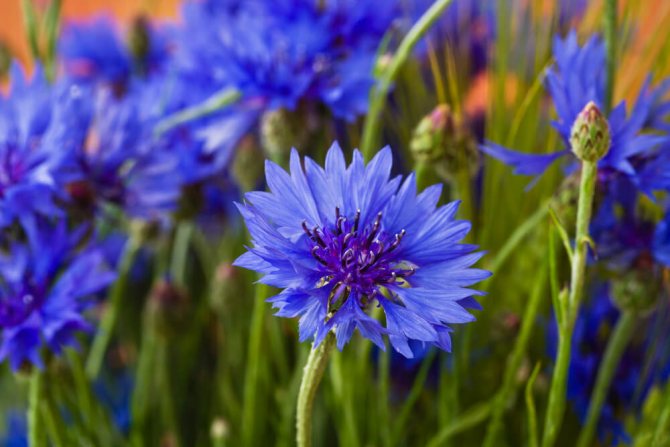

At first, annual cornflowers were grown in the gardens, but now more and more gardeners are choosing perennial varieties. Cornflower blooms all summer: from June to September, you will see cute blue spots on your flower bed. The foliage of this plant is also beautiful: bright and carved.
Read also: How to make a droplet greenhouse with your own hands
Cornflower is distinguished by its rare unpretentiousness, it endures winter, even the Ural one, without shelter. It can grow quite well both in the open sun and under the shade of trees and buildings. It is better, however, to choose partial shade: the flowering of the cornflower will be brighter and more lush. The plant has no requirements for the composition of the soil.
Cornflower is a wonderful livable neighbor for most garden plants; it can be part of a variety of flower arrangements. Today it is possible to choose not only flowers with a standard blue color of the petals, but also with white, pink, lilac.
Climbing rose
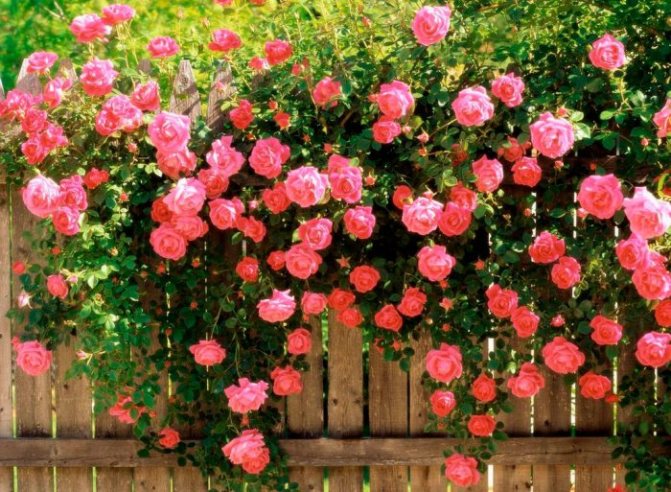

A very beautiful perennial, and the climbing rose has many varieties. The plant is climbing, the shoots reach five meters in length. In this case, not only luxurious buds are beautiful, but also bright foliage. Climbing rose blooms in the Urals in June, boasts small, but lush and brightly colored multiple buds.
Pansies
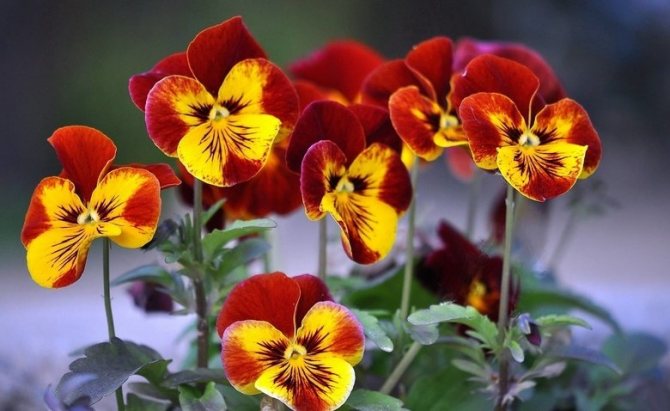

A cute little plant that delights with bright flowers. This violet begins to bloom at the very beginning of the summer season and pleases with beauty almost until the end of the warm period.
Stunted plants
As a rule, undersized flowers are grown in the foreground of garden zones. We offer you several options for perennials blooming all summer for Siberia and the Urals, which grow to a low height:
- violets or pansies... They belong to vegetation with a biennial cycle, that is, they begin to bloom in the second year after planting in the period from June to August. They have large purple flowers. They belong to unpretentious varieties and withstand cold climates;
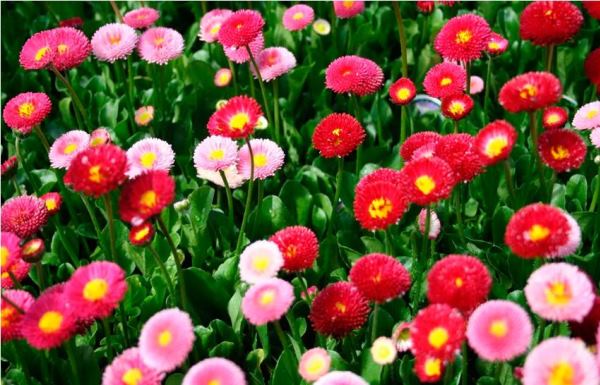

- suitable perennial loach flowers for summer cottages in Siberia include periwinkle... It blooms throughout the summer until autumn and complements the garden area with delicate pinkish and blue buds that spread over a carpet. Periwinkle can be planted both in the shade and in the sun;
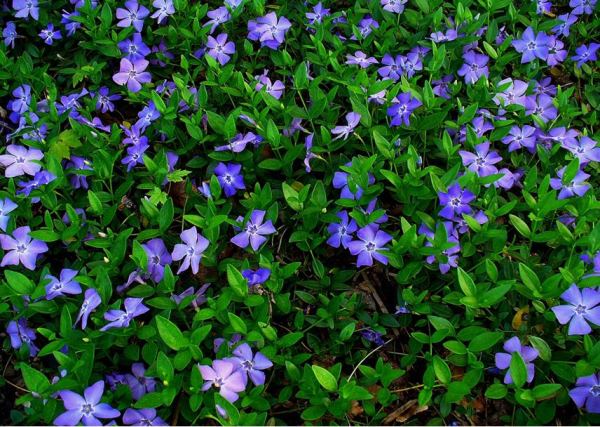

Perennial loaches for Siberia: photos and names - another example of an unpretentious plant - gentian... During the flowering period (from July to the end of August), bright blue bells appear on it. The gentian withstands the harsh climate and after a cold winter blooms as before, even without much care;
Autumn flowers
For autumn, you can also pick up quite a few colors that will delight you with the brightness of colors on dull gray days.
Chrysanthemum
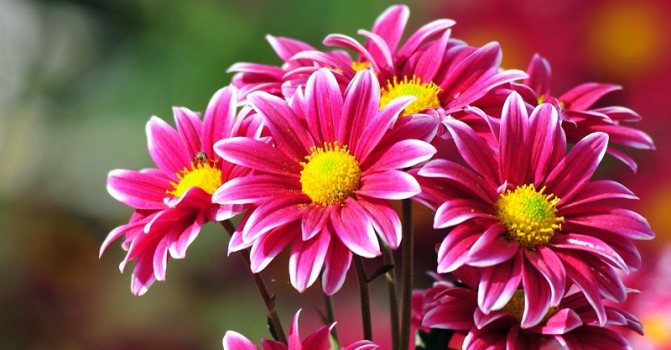

Probably the most famous and popular fall flower. In height, the plant can reach 110 cm, and the color of the petals can be of any shade. The buds are very lush, sometimes huge. A large number of buds can bloom on one bush: thus, the chrysanthemum is a real decoration of the autumn garden. Chrysanthemums stand for a long time, even cut.
Korean chrysanthemum
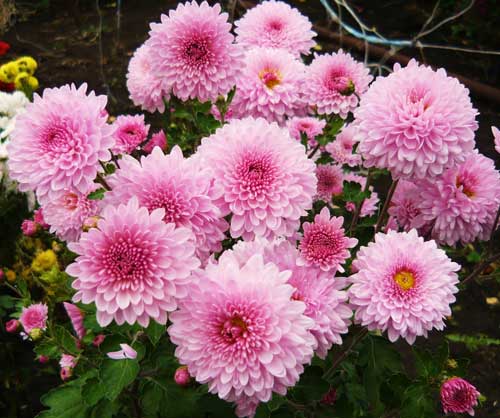

This type of plant is very decorative, but small-flowered varieties are more suitable for the Urals. Shelter will be required for the winter.
Marigold
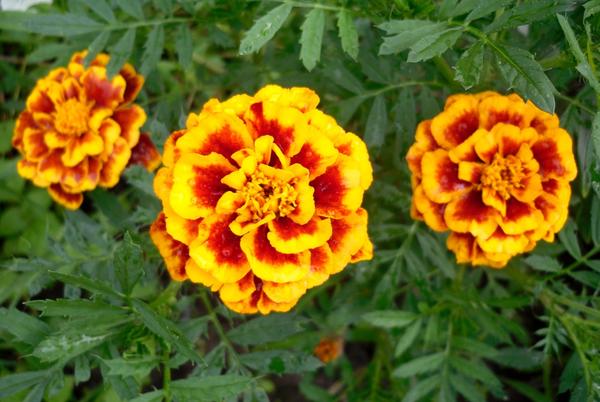

Lovely flowers, known to everyone without exception. Marigolds boast a deep warm range: their petals are colored in all shades of yellow, brown and orange. A flowerbed with marigolds always looks picturesque, besides, these flowers perfectly coexist with other plants. They are small in height and can be used as a curb.
Phlox
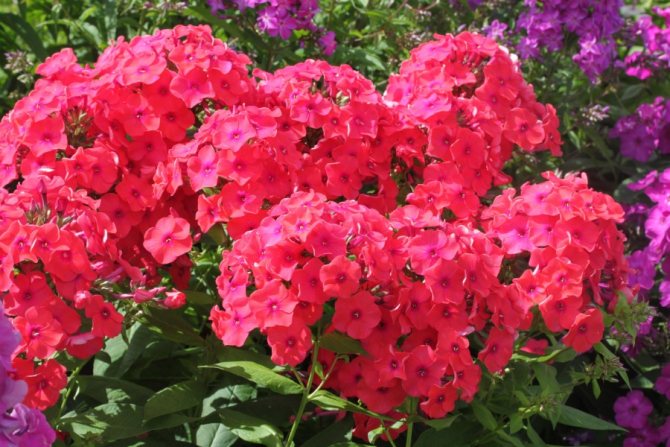

This plant is one of the main decorations of the autumn flower bed. Even in the Ural region, phlox tolerates winter well, begins to grow in early spring, and begins to bloom in the second half of summer. The flowering period lasts until October.
In addition to long flowering, phlox also boasts an amazing variety of varieties and colors. You can decorate any element of the garden with the help of this unpretentious flower: a flower bed, a mixborder, an alpine slide, and a recreation area.
Aster
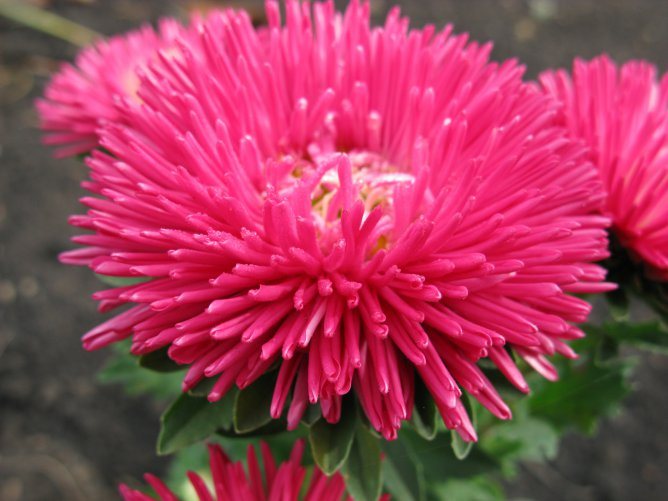

Although more often gardeners choose annual varieties, perennial asters are also in steady demand. Aster bloom is taken in August, and this period lasts for a very long time, up to severe frosts. The shades of the petals are different: more often lilac, white, pink, crimson. All varieties are distinguished by enviable immunity, stability and unpretentiousness.
It reaches a height of 20-150 cm, flowering buds can have a simple or double, semi-double structure. Already in the spring, the aster turns green, goes into active growth, tolerates summer without difficulty, and in the fall, thanks to it, the garden literally transforms.
Note that perennial asters easily tolerate pruning and shaping: they can be used to make dense borders, create picturesque compositions. Minus - aster is prone to self-seeding and seizing nearby territories. Therefore, you will have to regularly thin out the plantings by removing excess bushes.
Rudbeckia
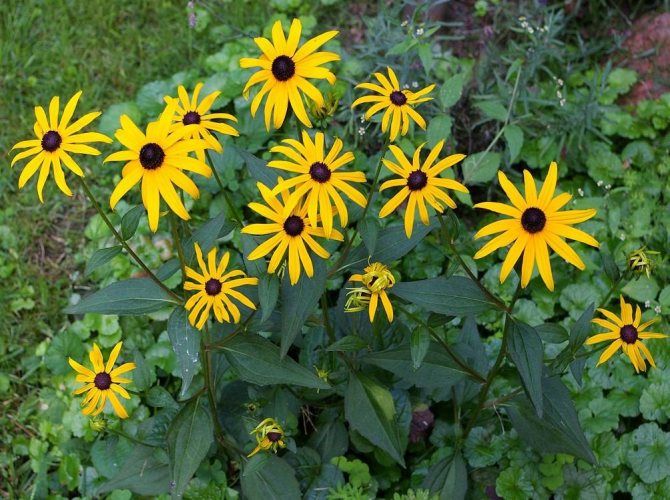

This tall plant is somewhat reminiscent of a chrysanthemum and a large chamomile at the same time. Shades of petals are different, flowering is long, in growing rudbeckia is unpretentious.
The best flowering shrubs for summer cottages
Certainly flowering ornamental crops are in greatest demand among owners of personal plots. Knowing which of the most popular long-flowering plants are most suitable for landscaping in a particular area, you can quite easily decide on the choice of a shrub.
| Name | Benefits | Landing rules | Growing features |
| Spirea | Unpretentiousness, frost resistance, lush and long flowering, the ability to grow well | The exactingness of various types and varieties to the indicators of illumination and soil moisture is different | The plant is undemanding to care for and is suitable for novice florists |
| Chubushnik | Abundant flowering, good aroma and excellent frost resistance, disease resistance | In areas represented by sufficiently fertile and air-permeable soils without stagnant moisture | Annual pruning, watering in dry seasons, feeding in spring and autumn |
| Lilac | Unpretentiousness, frost resistance, a large number of varieties and hybrids, abundant flowering | Areas with high-quality lighting and well-cultivated soils | There are both tall and low varieties and hybrids, the care of which varies. |
| Hydrangea | Long flowering period, unpretentiousness and the ability to grow on acidic soils, unsuitable for growing other plants | Preference should be given to areas protected from winds on the north side of buildings | Creation of an optimal level of humidity, pruning, shelter for the winter |
| Forsythia | Earlier than other ornamental crops, it blooms in spring, is characterized by exceptional decorativeness and resistance to diseases. | Sunny and protected from a gusty cold wind area without waterlogging of the soil | Creation of an optimal level of humidity, pruning, shelter for the winter |
| Mountain ash | Absolute unpretentiousness, ability to grow and bloom in shade, beautiful bloom | The crop grows best of all on nutritious, loose and well-moistened soil, does not tolerate long dry periods | Timely and regular removal of fast growing root shoots |
Tall
When creating a design in the garden, it is important to provide for plants of different heights: it is known that multi-level compositions always look especially attractive. Most of the plants presented above are stunted, therefore, below we will get acquainted with the most attractive tall species for the Ural garden.
Astilba
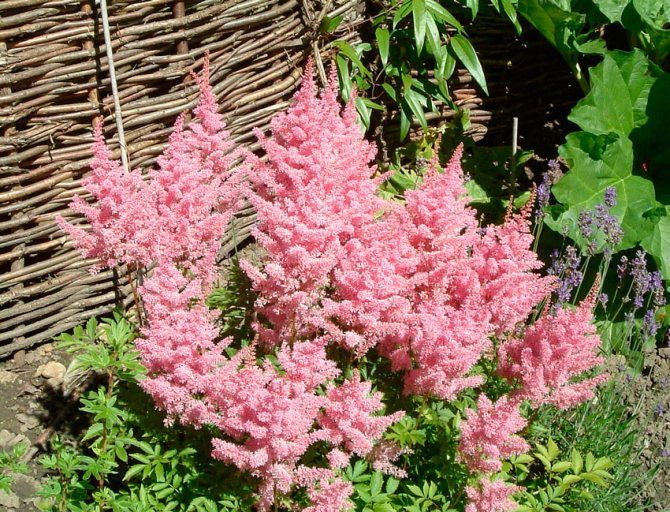

A wonderful decorative flower that fits perfectly into a decent-sized stately flower bed, it can also be used as a border. If astilba is part of the composition, it is better to plant it in the background - the stem reaches one and a half meters in length. The plant is unpretentious and does not need special care.
Delphinium
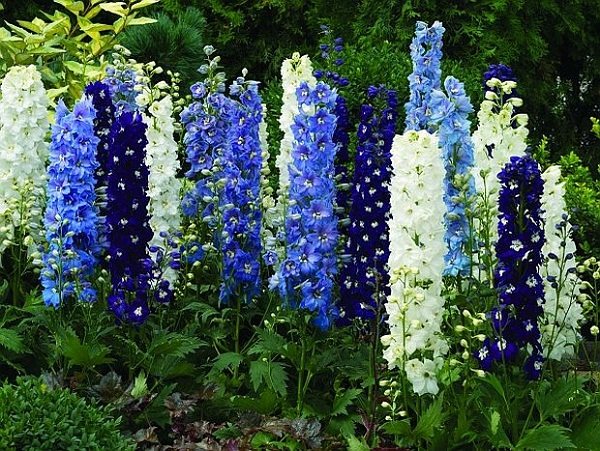

One of the most decorative and beautiful tall plants. On a flower bed, delphiniums look like graceful tall bright candles decorated with numerous buds. Usually gardeners plant several varieties of this flower at once to make the composition brighter and more attractive. The plant blooms all summer, no transplant is required for this perennial; both a sunny meadow and a shady area are suitable for growing.
Curly flowers
In the Urals, you can grow not only ordinary perennials, but also curly ones. Climbing varieties are ideal for decorating a variety of structures: arches, trellises, vertical structures. Next, consider the most beautiful and unpretentious climbing plants for cold climates.
Clematis
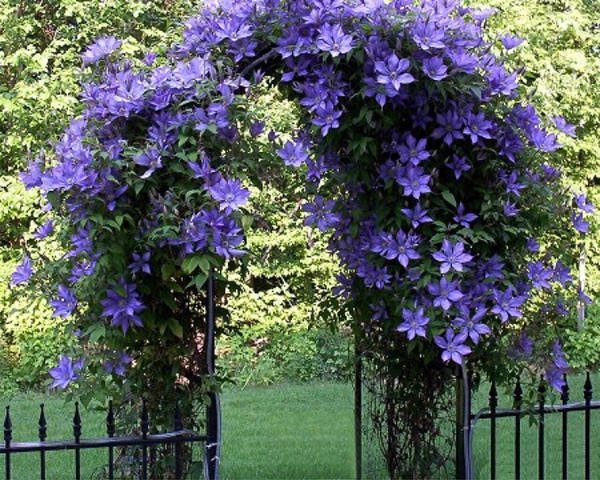

This beautiful flower is ideal for vertical gardening. Clematis is a perennial vine that blooms throughout the summer. One shoot reaches 15 meters in length.Clematis needs annual pruning - the procedure is performed before the next growing season.
The buds are very unusual and bizarre, they look like exotic flowers. The color is delicate - pink, lilac, lilac. Along with the ability to decorate the garden, clematis also has health benefits. This plant is able to purify the air. In addition, its stems and foliage contain many useful substances: tanning, essential, vitamins.
Chinese lemongrass
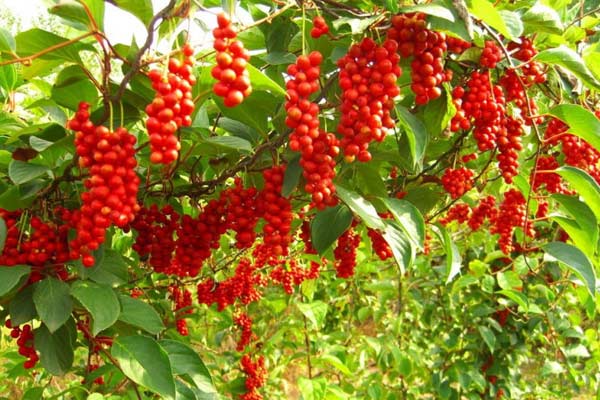

The climbing perennial is ideal for the garden. Lemongrass pleases with both bright foliage and healthy fruits of a deep red hue. During the flowering period, the bush is covered with white buds, exuding a delicate citrus aroma.
Basilist
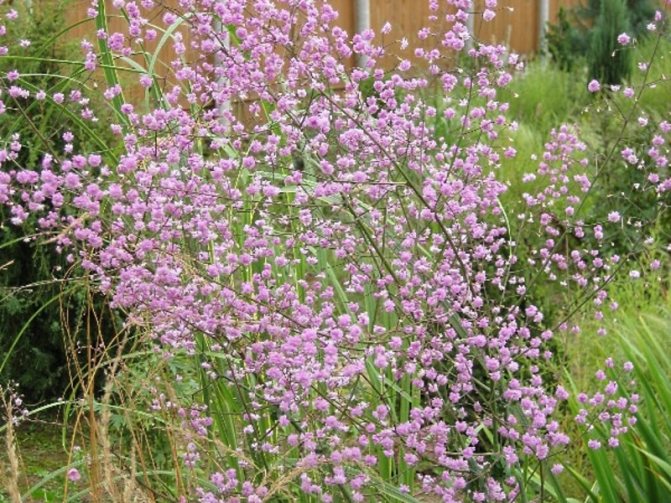

A curly garden flower that blooms in June. When it begins to bloom, there is a persistent impression of the resemblance of a bush with a lush cloud. The plant is unpretentious, able to grow successfully both in the sun and in the shade. However, the greatest decorative effect can be achieved by planting a flower in a place with a sparse shadow.
The flower grows, though slowly, but surely, it does not tolerate transplants and other traumatic procedures. But it is distinguished by its amazing resistance to frost, undemanding to the care and quality of the soil.
It reaches an impressive height - about two meters. But due to the climbing shoots, high growth is smoothed out. The flowers are small, gather in lush clusters-inflorescences. The color of the petals is different: pink, white, greenish, cream, lilac, soft yellow.
We got acquainted with various types of flowers that can be successfully grown in the difficult climate of the Urals. Note that all of the listed plants are also suitable for Siberia. As you can see, the choice is quite worthy - from the plants mentioned in the article, you can form a wonderful garden landscape, pleasing with flowering in any period of the warm season.
The best ornamental fruit bushes
Ornamental shrubs, which are very popular in the climatic conditions of our country, very organically fit into almost any landscape composition. Such decorative and rather unpretentious plants in care not only serve as an attractive background for flower beds and flower beds, but also look great in single plantings on lawns. Moreover, ornamental fruit bushes will become a worthy decoration of the site.
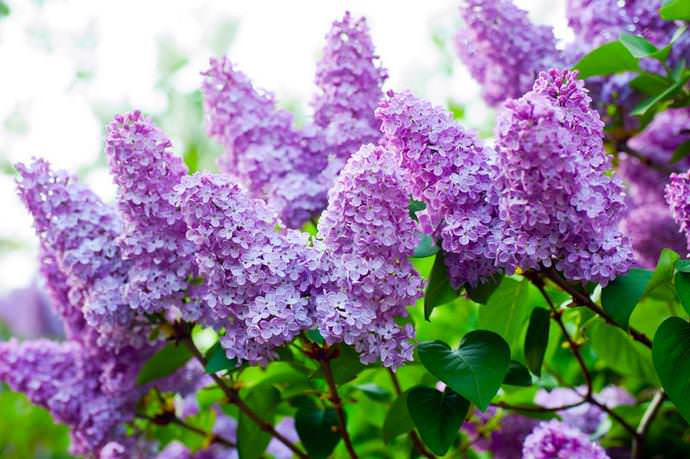

| Name | Benefits | Landing rules | Growing features |
| Viburnum | Frost resistance, unpretentiousness, shade tolerance, long-term decorative effect, edible fruits | In areas represented by sufficiently fertile and air-permeable soils without stagnant moisture | Repeated treatment against pests and diseases, pruning, mulching, fertilizing with mineral complexes |
| Rose hip | Exceptional unpretentiousness, fast growth, healthy edible fruits | Preference should be given to well-lit and sun-warmed areas | The plant is undemanding to care for and is suitable for novice florists |
| Hawthorn | Unpretentiousness, the ability to grow and bloom very profusely even in shaded areas | It grows and develops best on nutritious, loose and well-moistened soils. | Very poorly tolerates dry periods and needs regular removal of root shoots |
| Edible honeysuckle | Ornamental culture, winter-hardy, very early-growing and regularly fruitful | Grows well and bears fruit abundantly on sandy loam, loamy, as well as on heavy soils or peat bogs | These shrubs are very durable, and with standard care they can be grown in one place for several decades. |
| Barberry | Unpretentiousness, frost resistance, a large number of varieties and hybrids, high decorative effect | Can be content with poor soils, but does not tolerate stagnant moisture; is one of the fairly light-loving plants | It is very difficult to tolerate waterlogging of the soil and needs frequent removal of root growth |
| Rowan red-fruited | Frost resistance, unpretentiousness, shade tolerance, long-term decorative effect, edible fruits | In areas with sufficiently fertile and breathable soil without moisture stagnation | Sometimes the plant may need to carry out minor pruning in order to maintain the optimal crown shape. |
| Black chokeberry | Exceptional unpretentiousness, fast growth, healthy edible fruits, early maturity | The bush grows poorly and bears fruit on swampy, saline and rocky soils | Care consists in timely weeding, loosening of the soil and regular irrigation measures |

